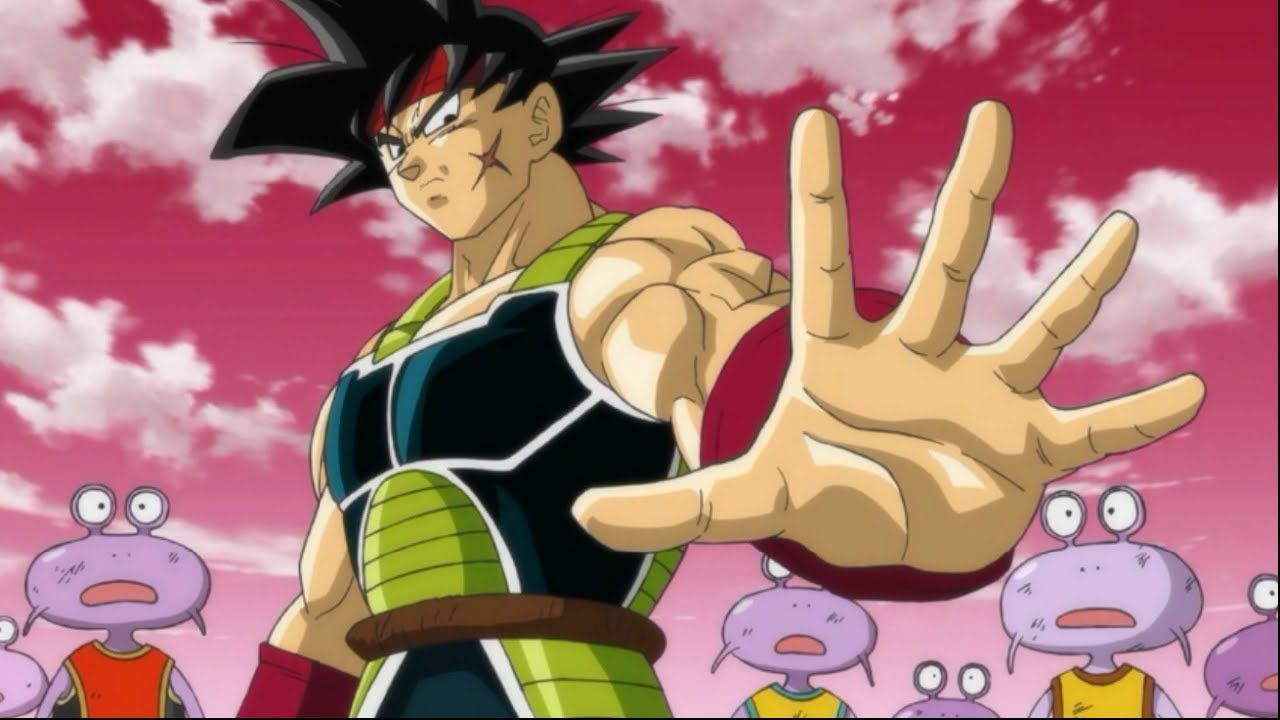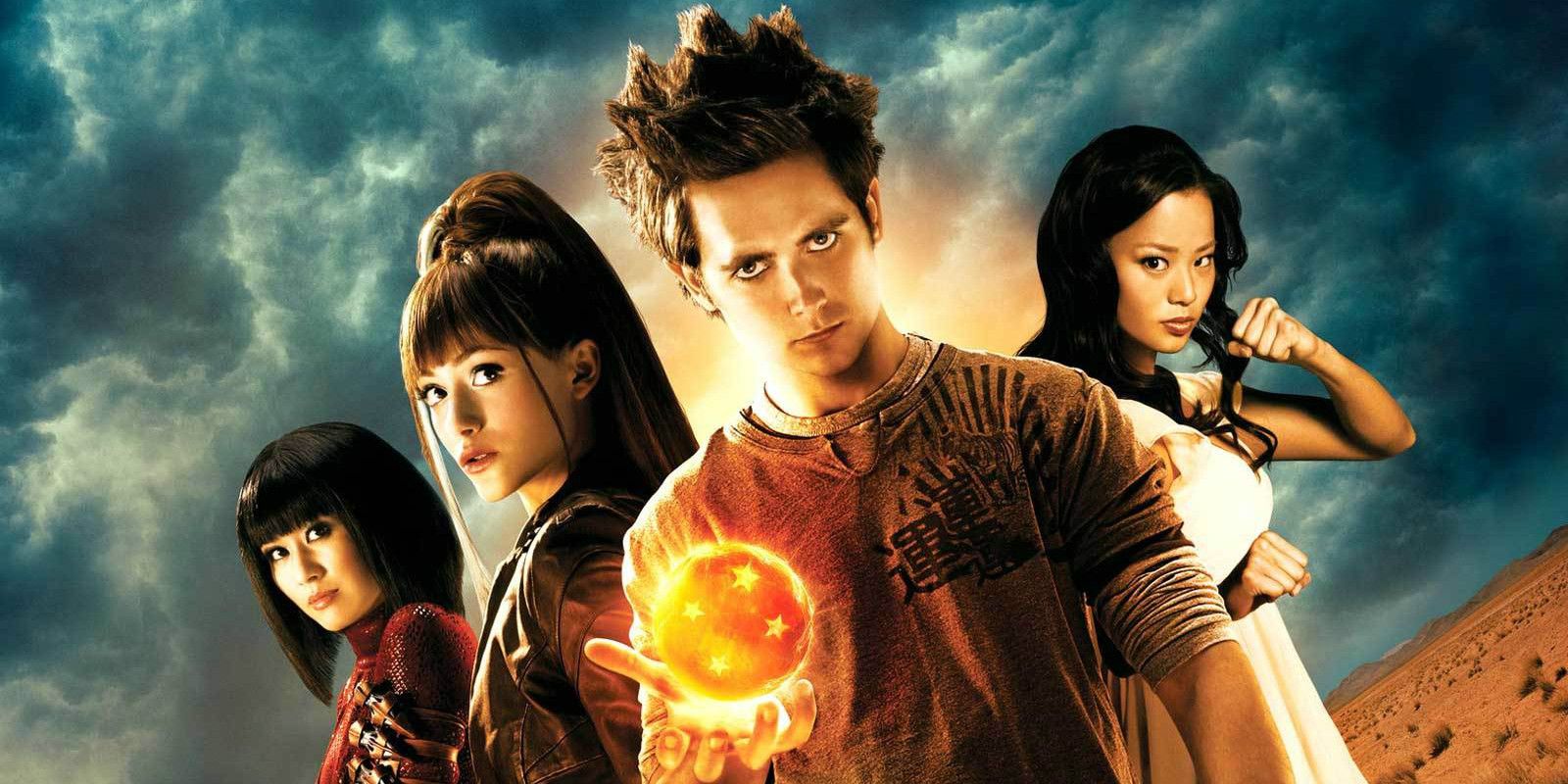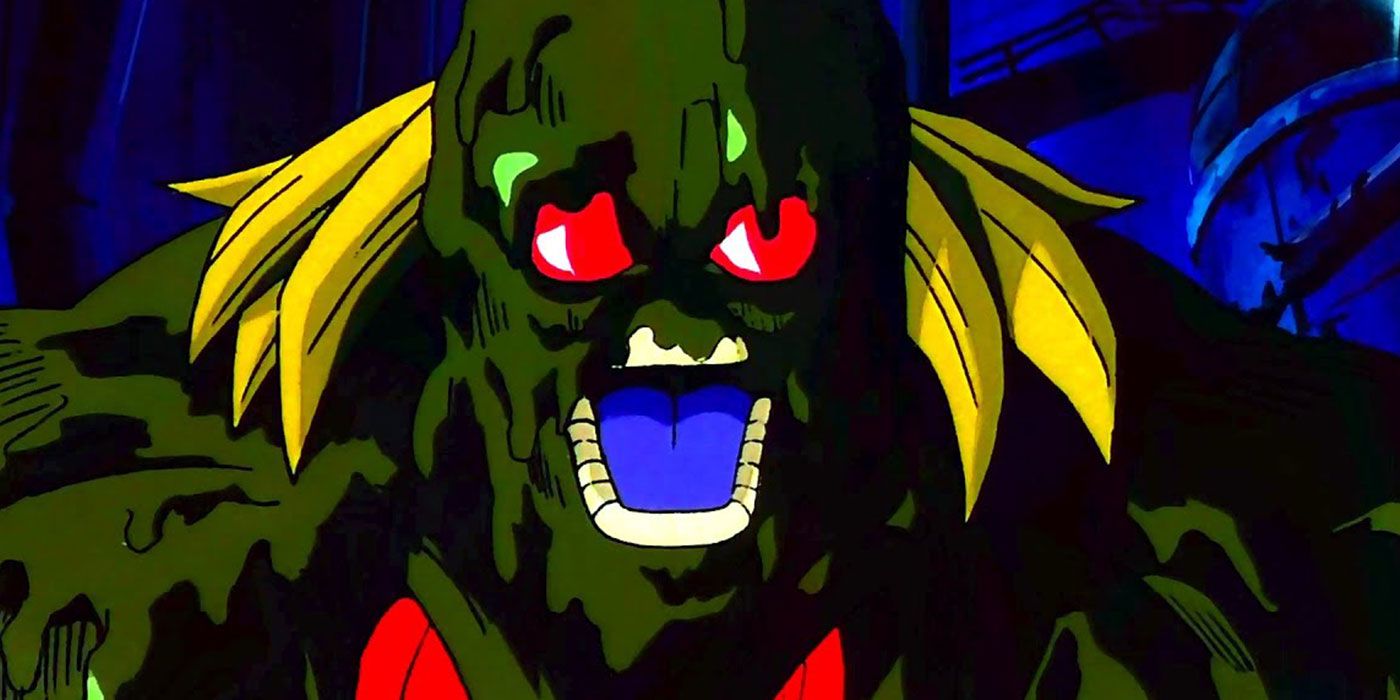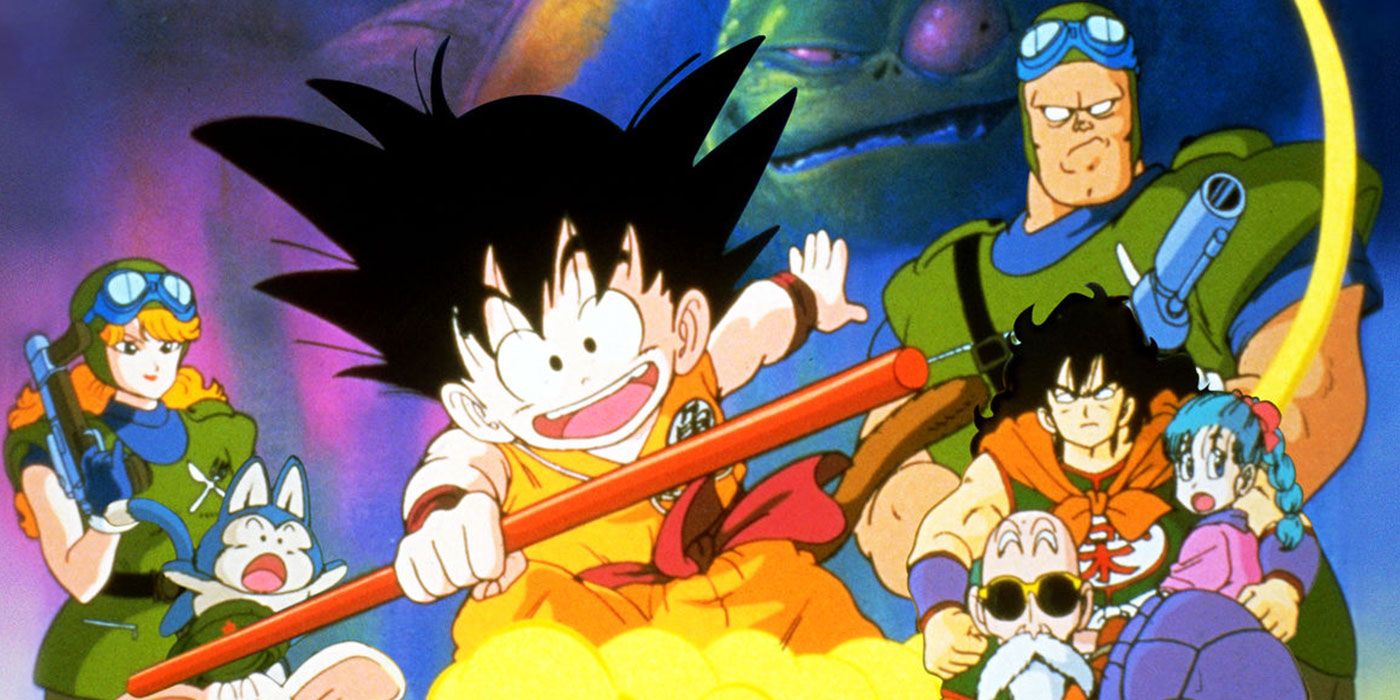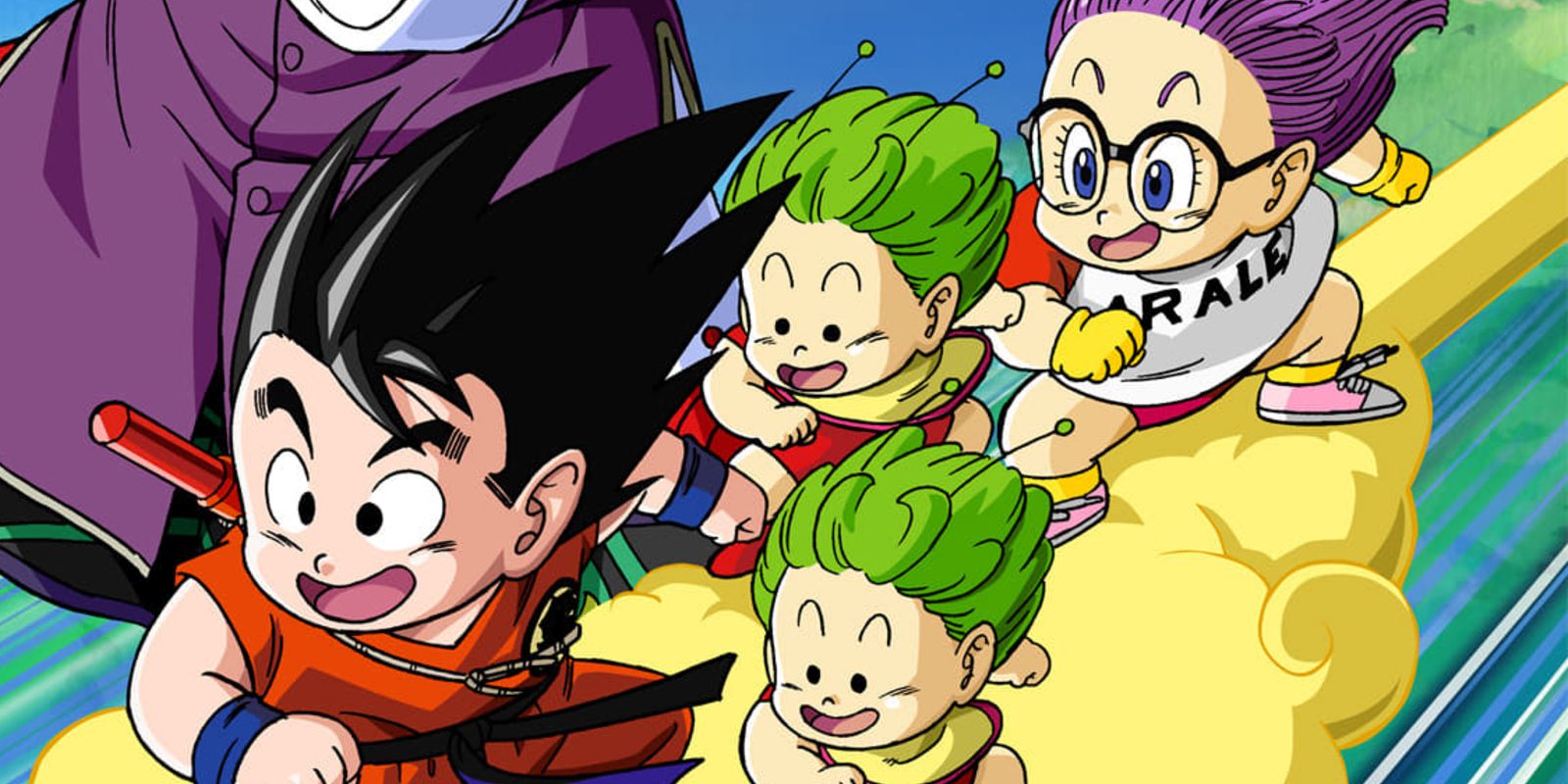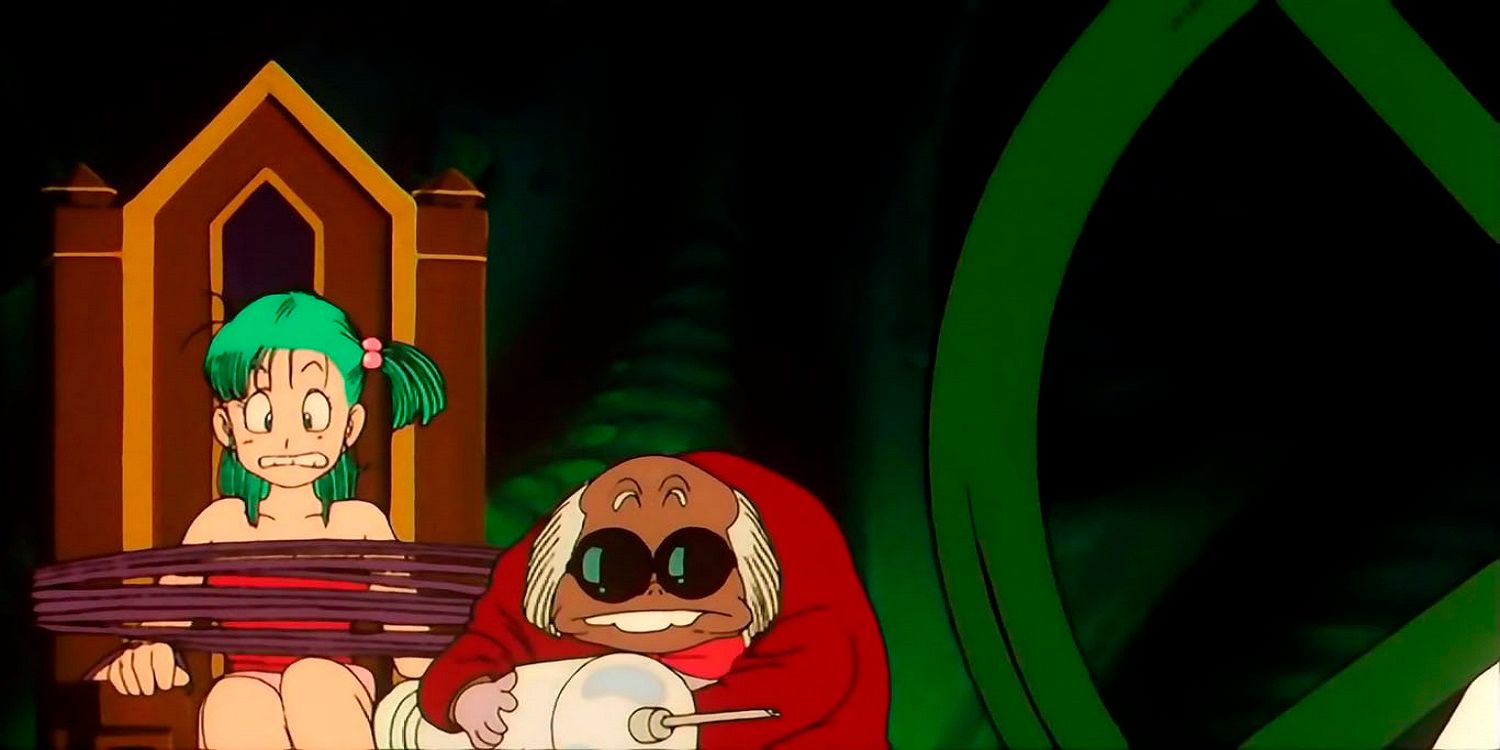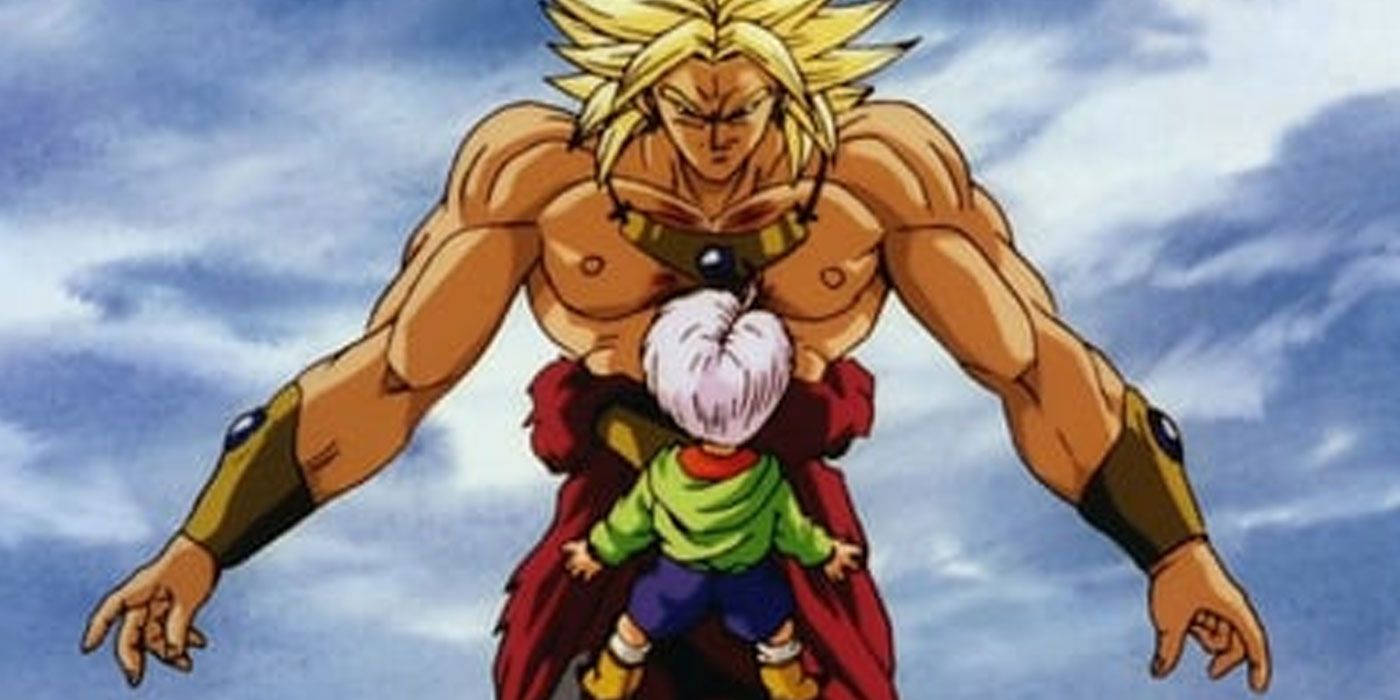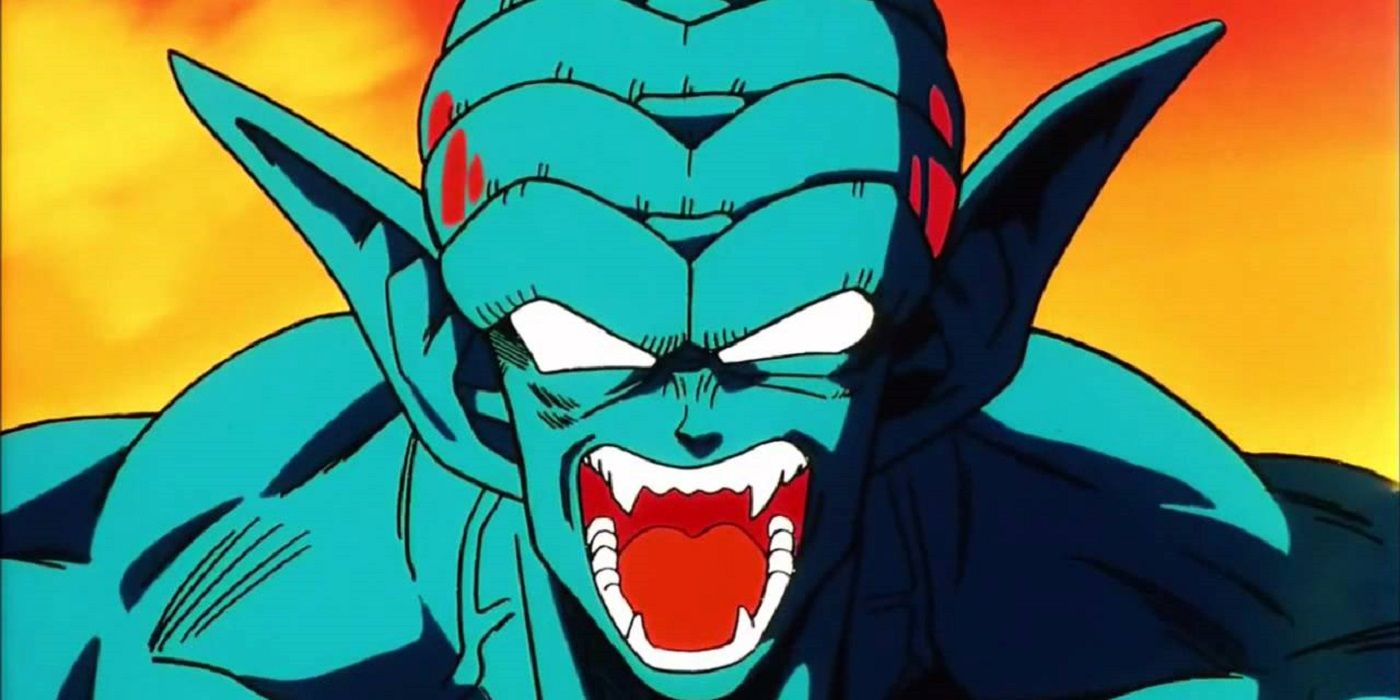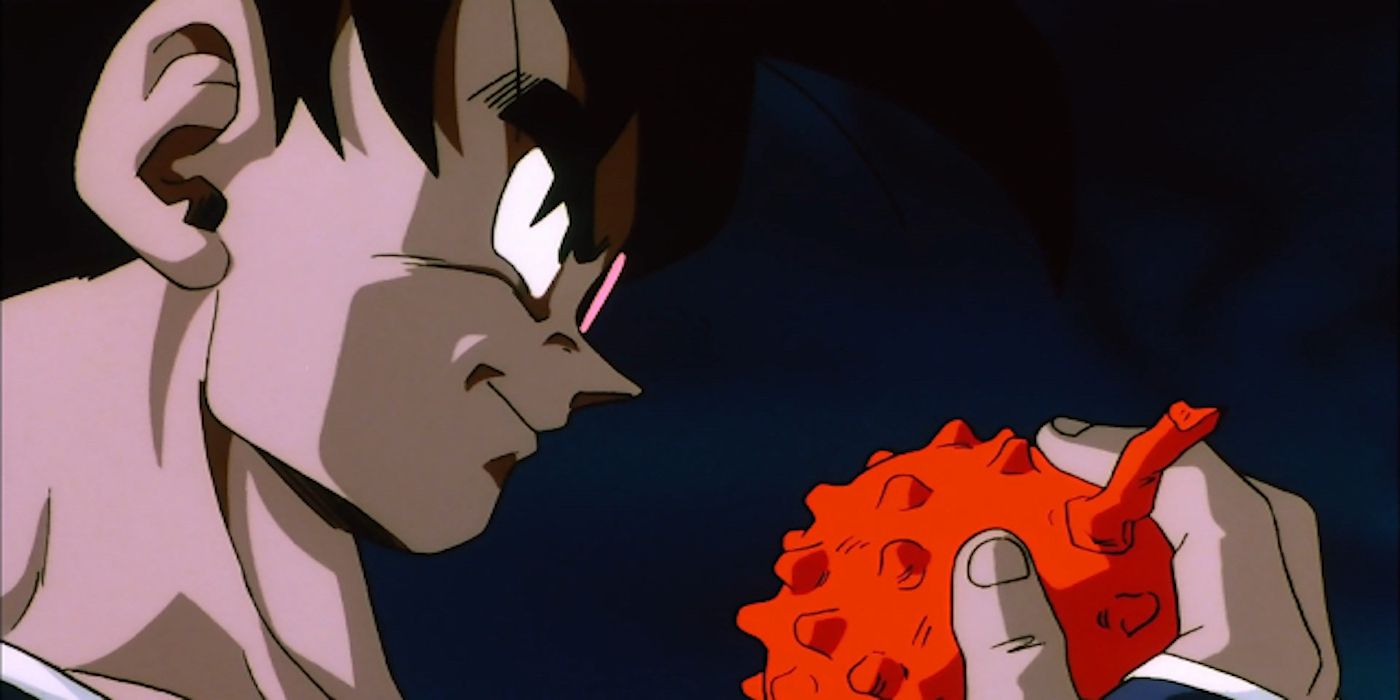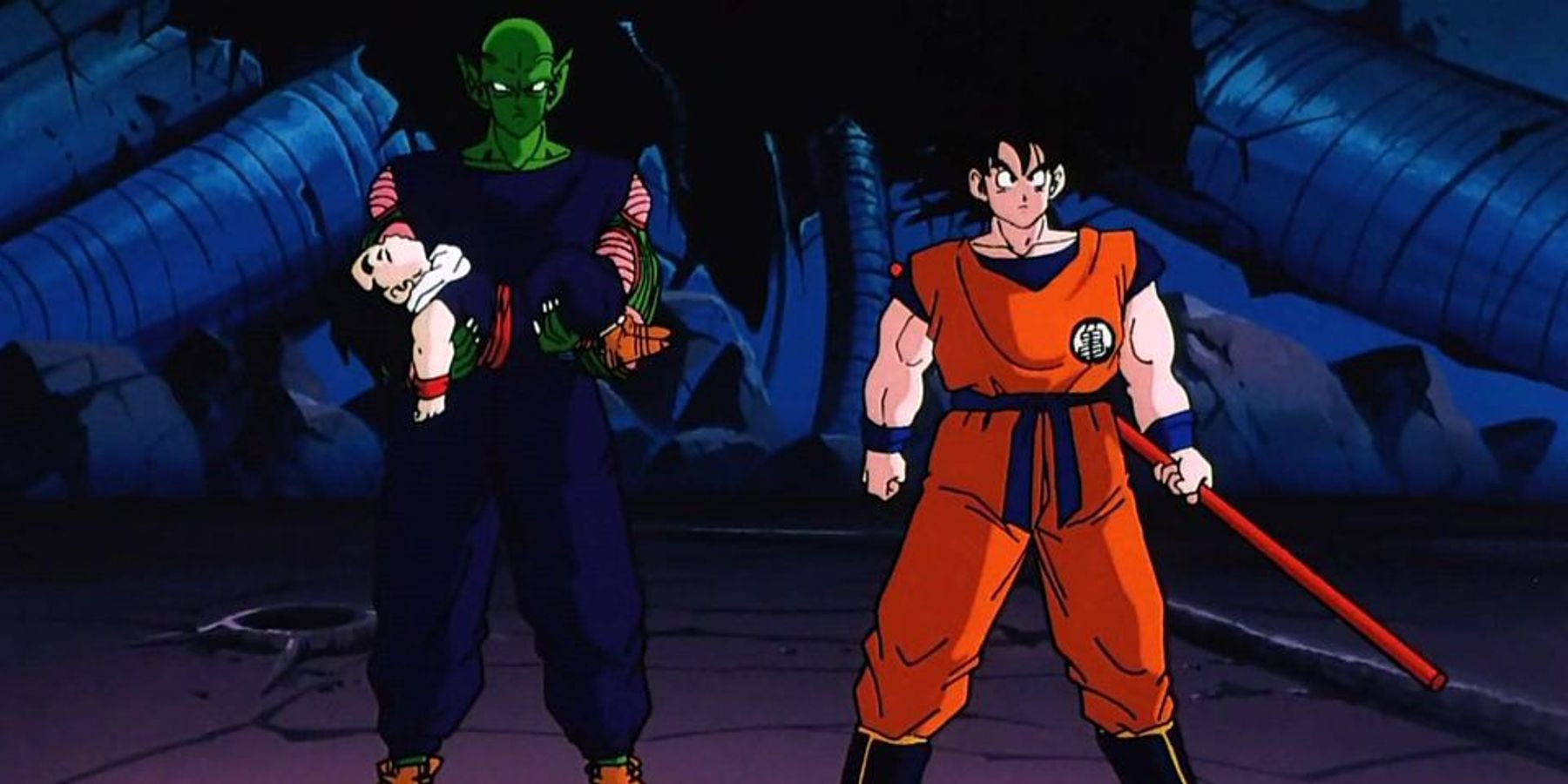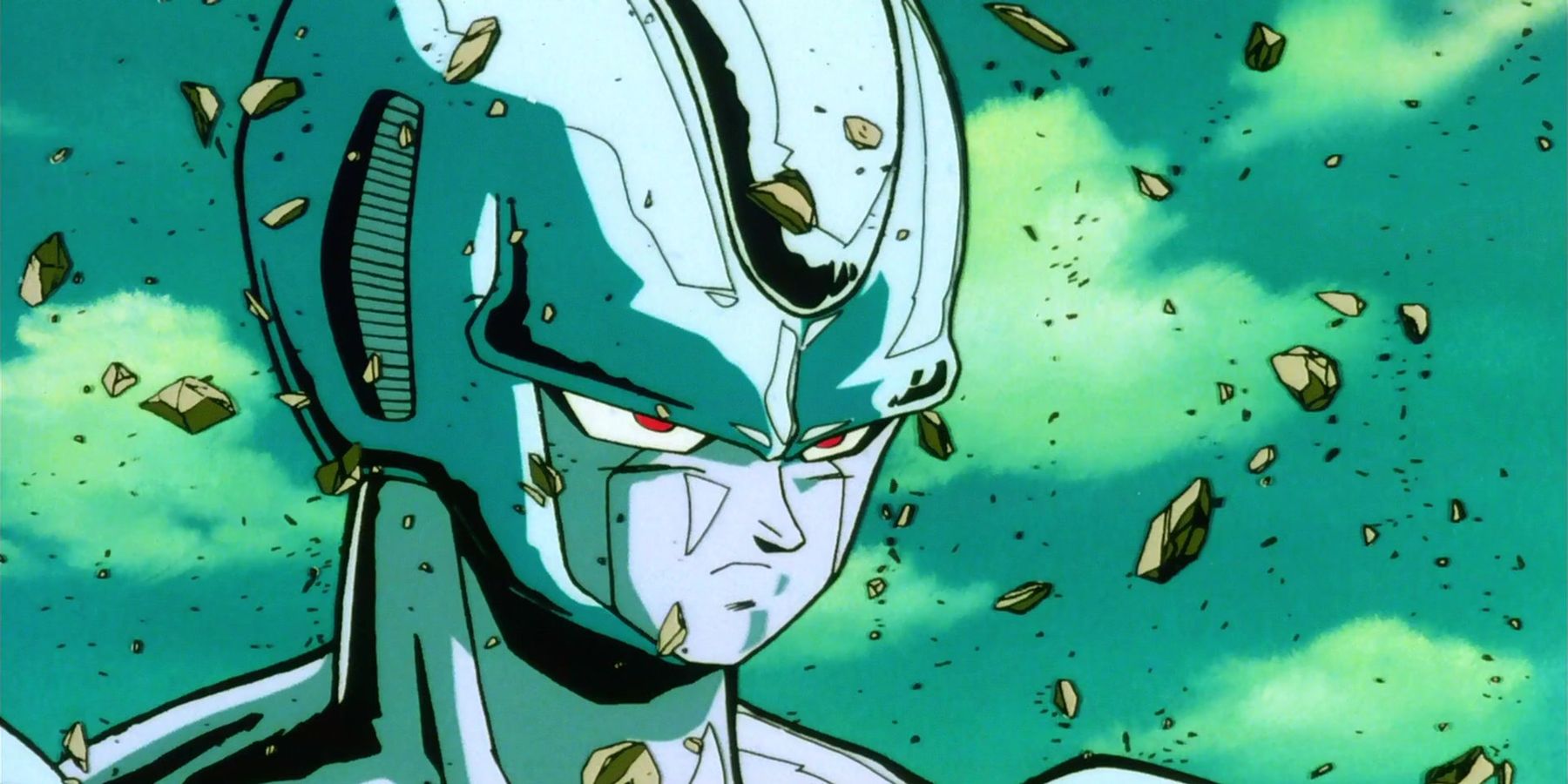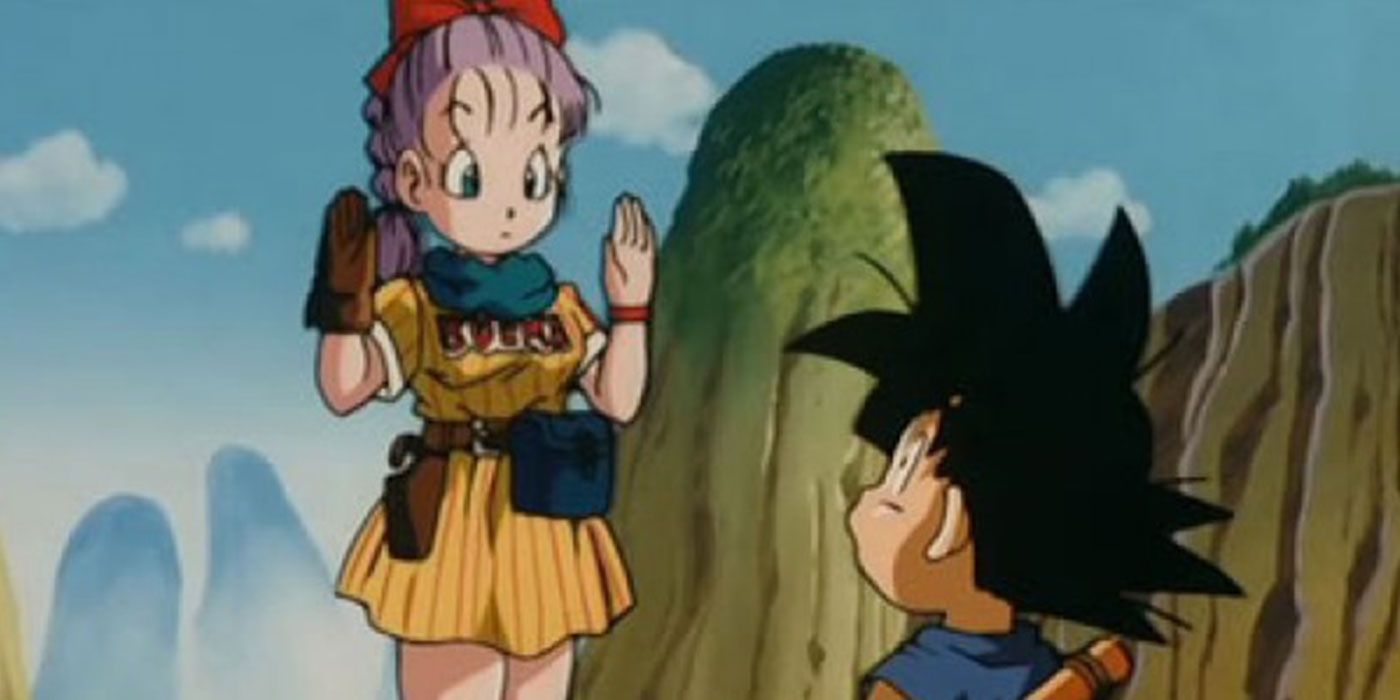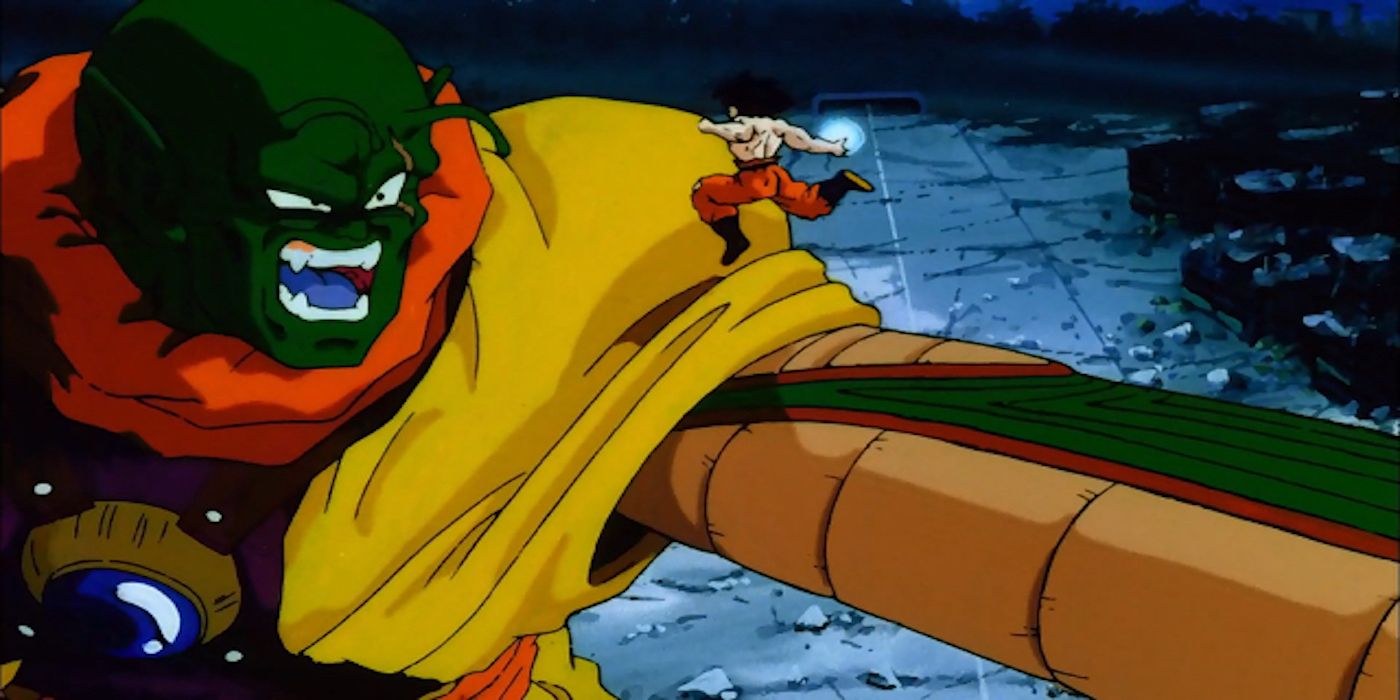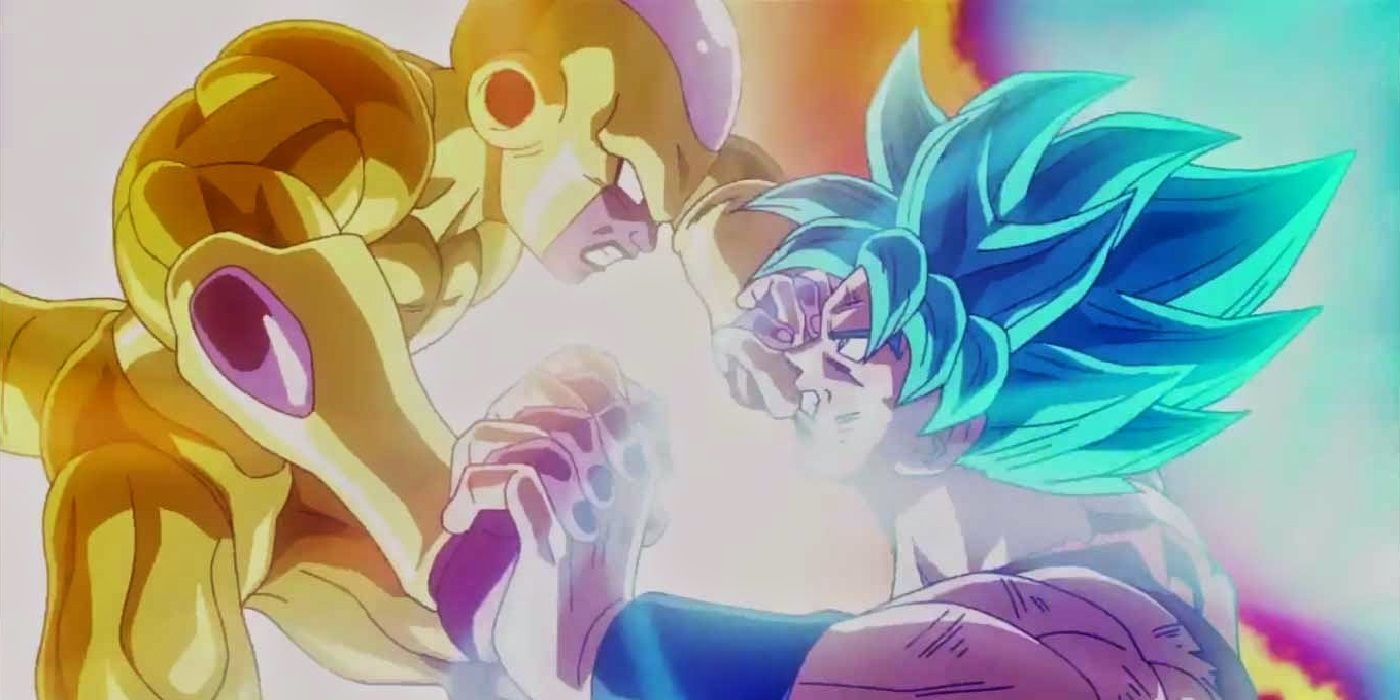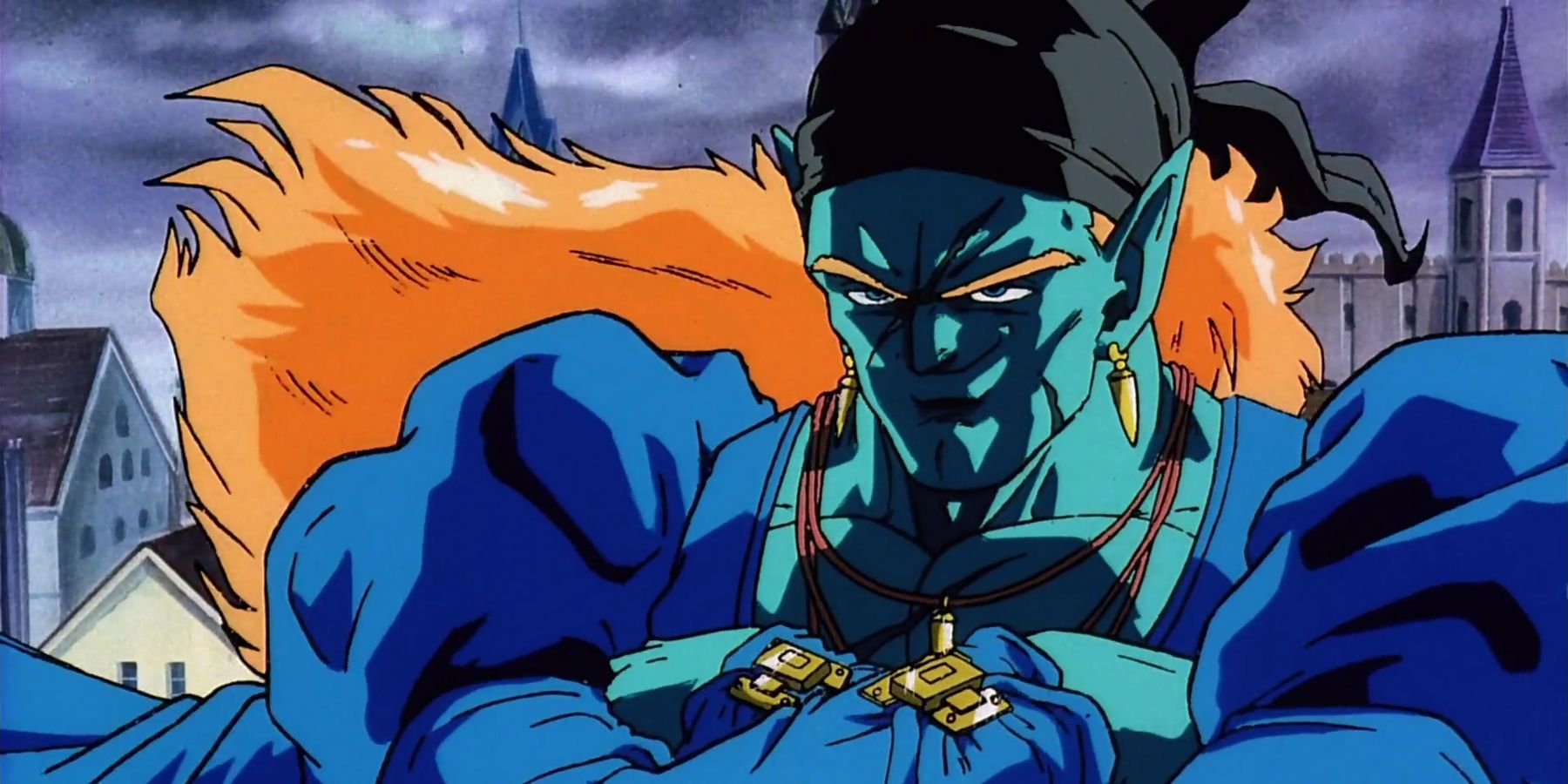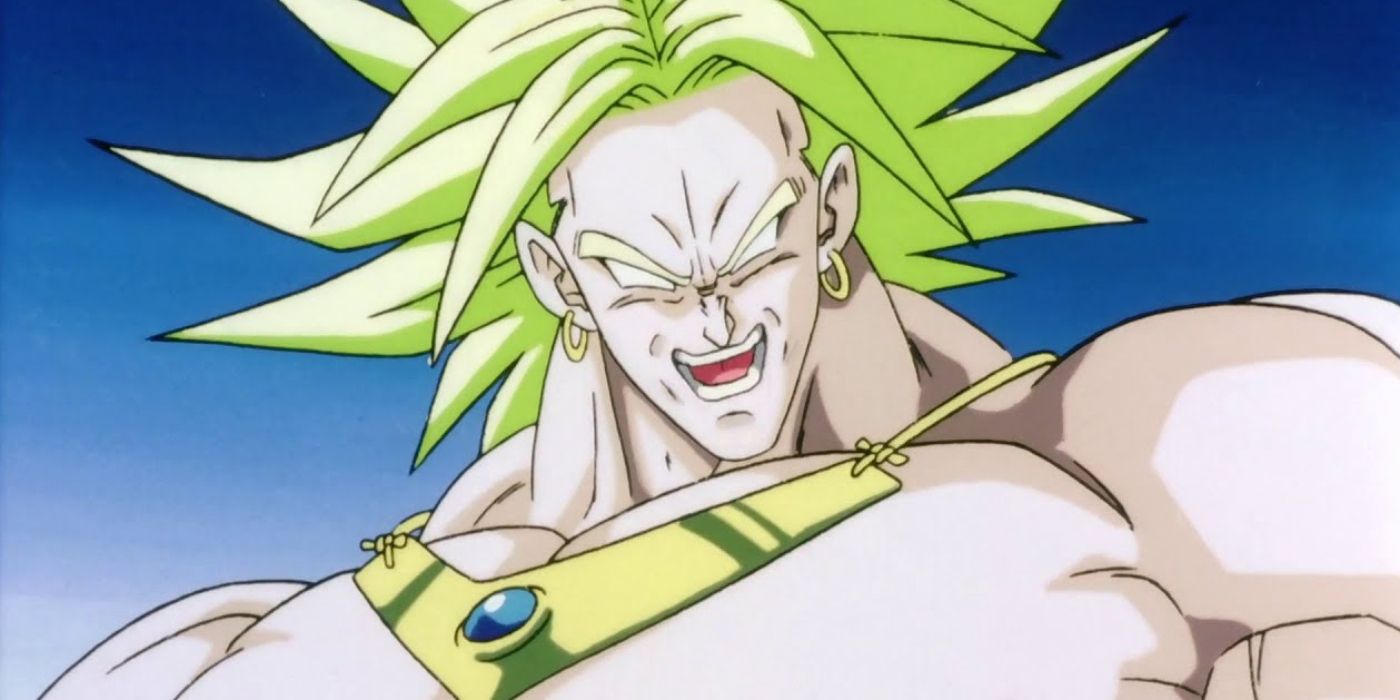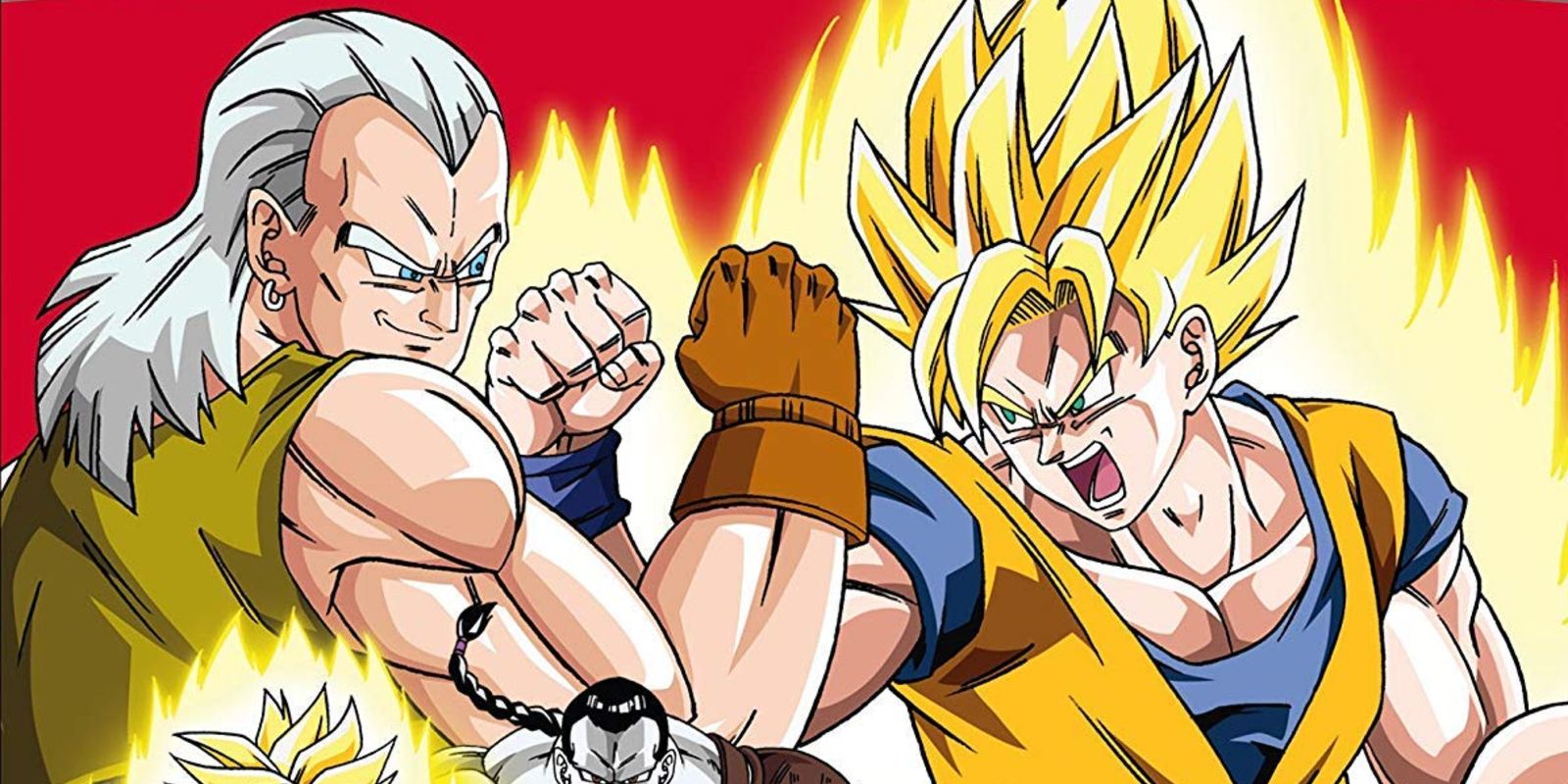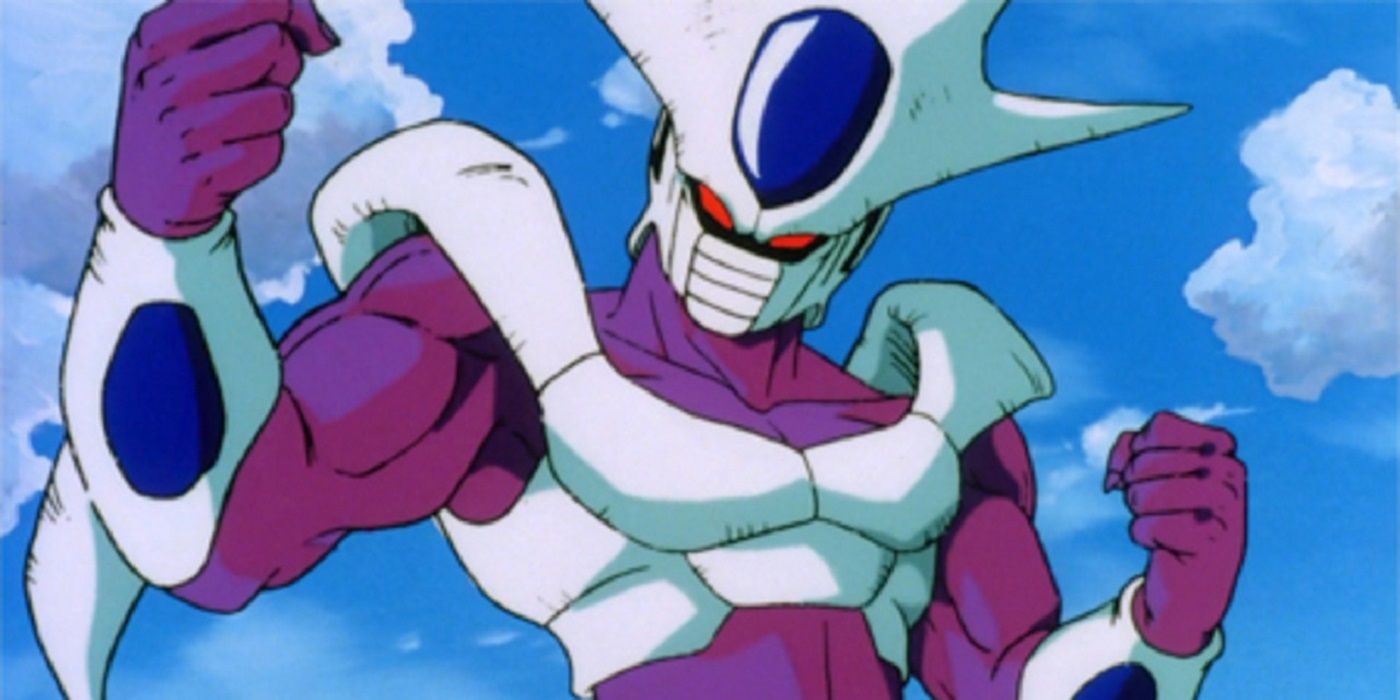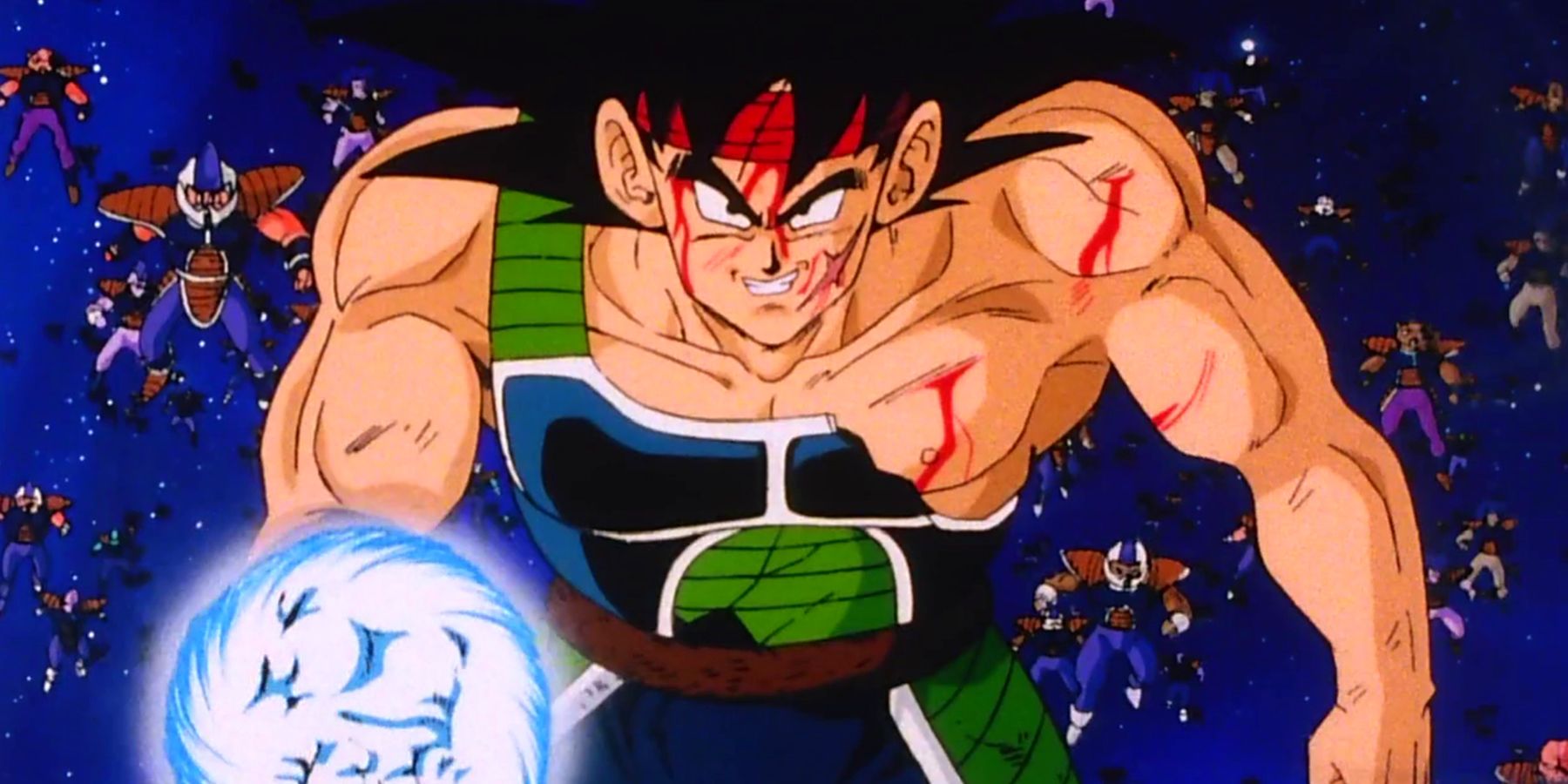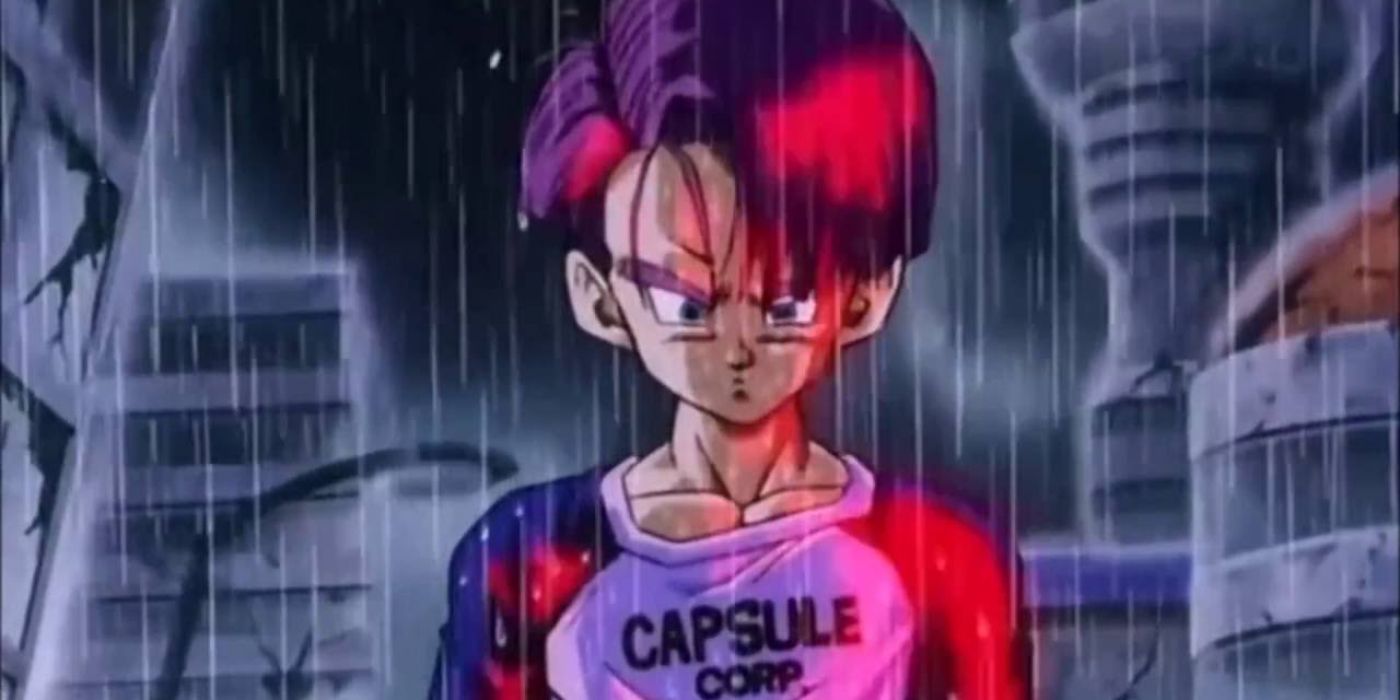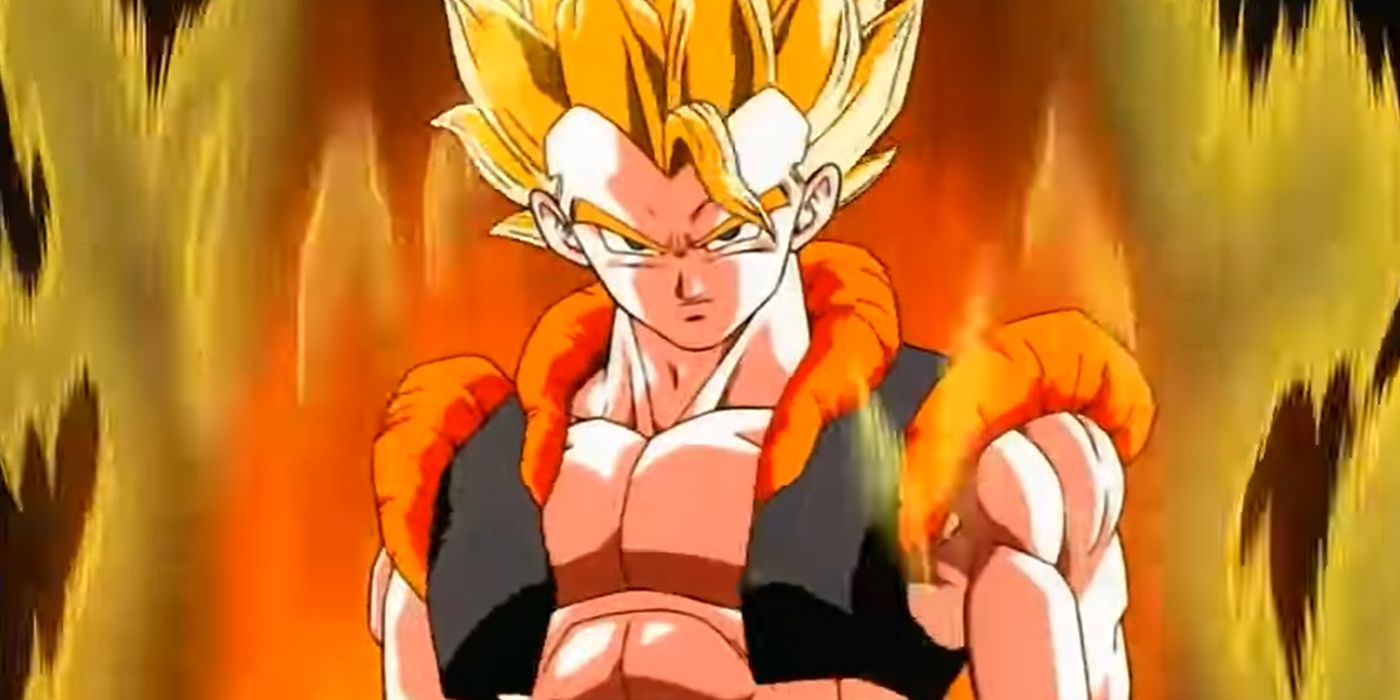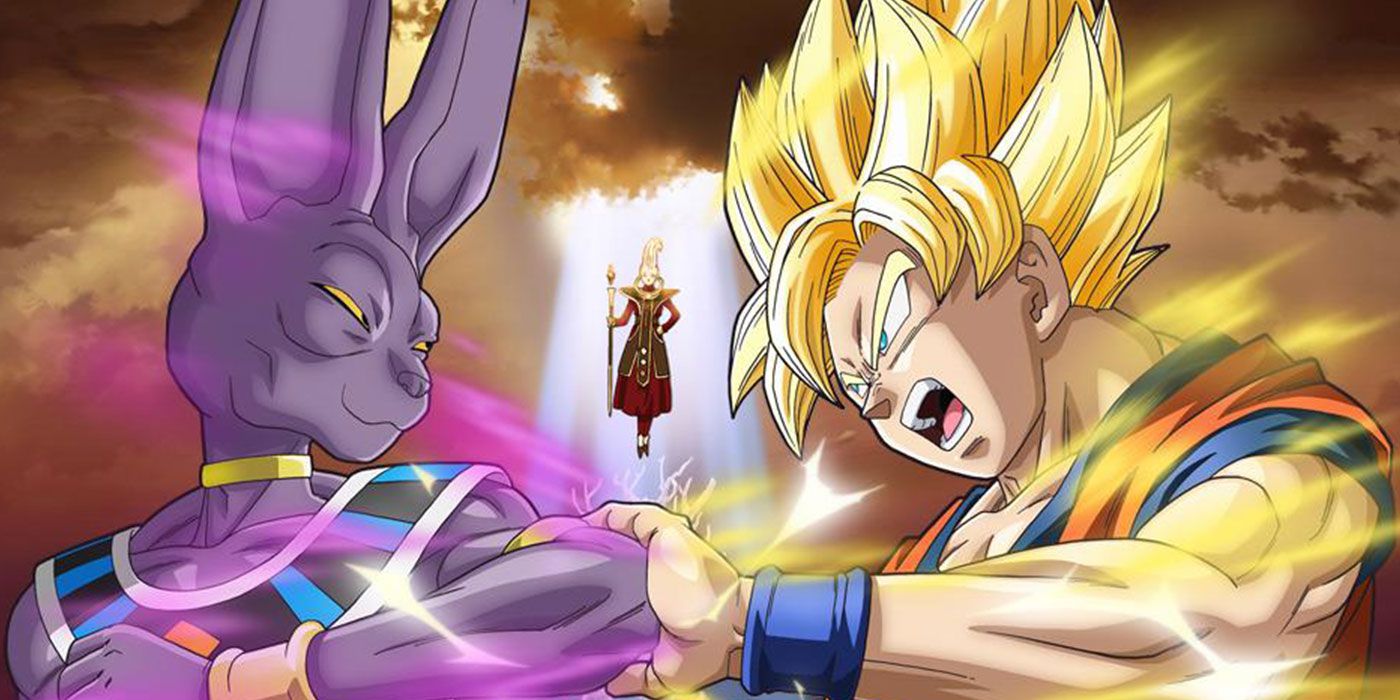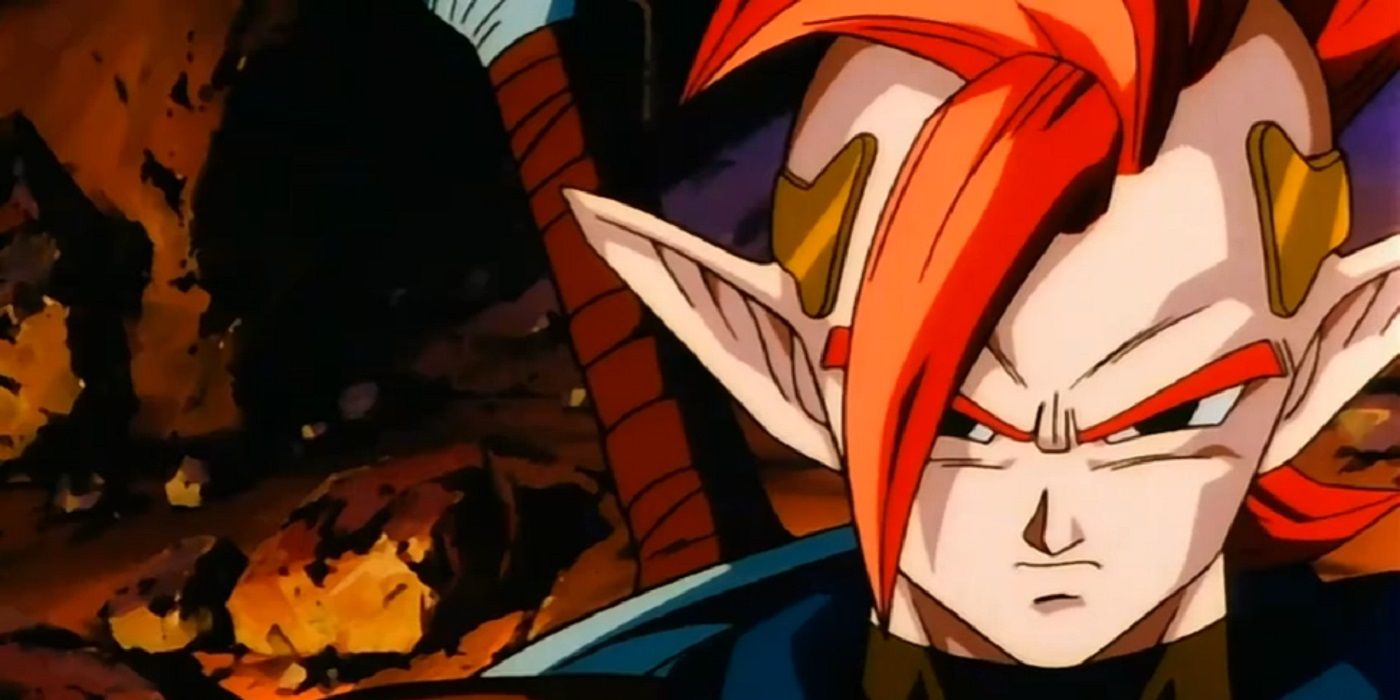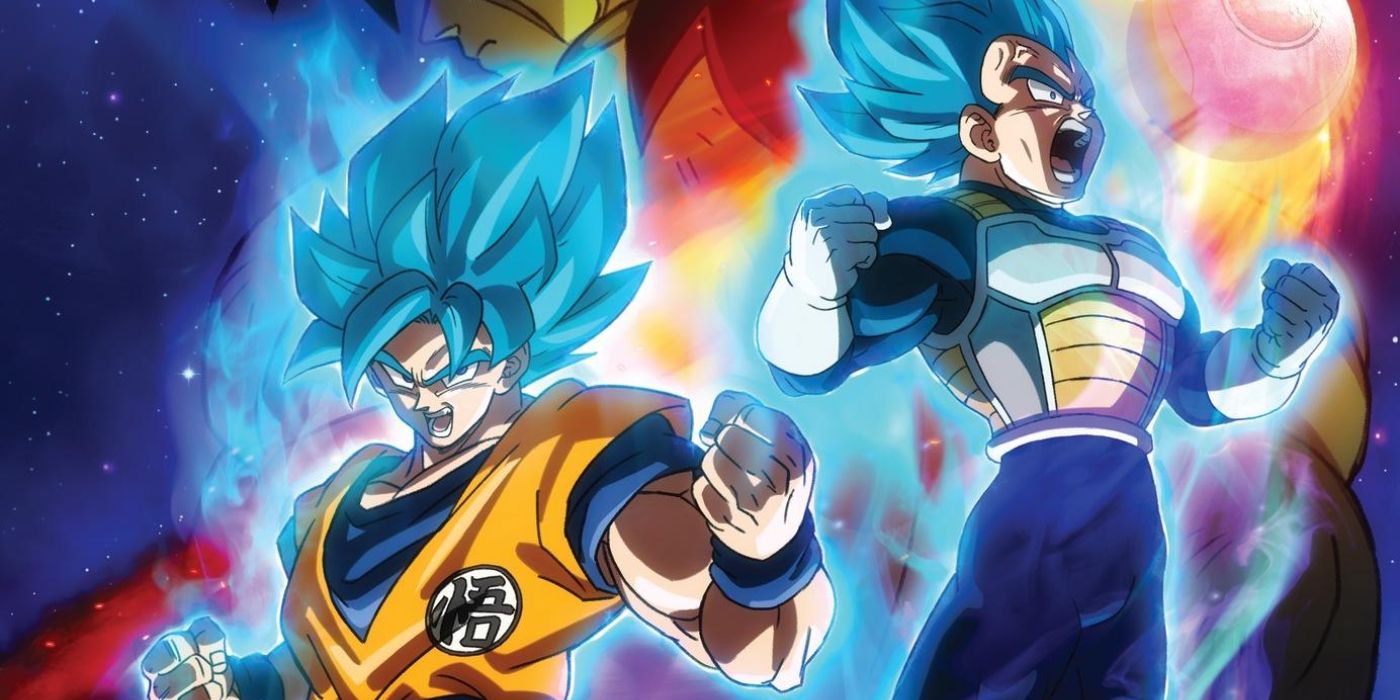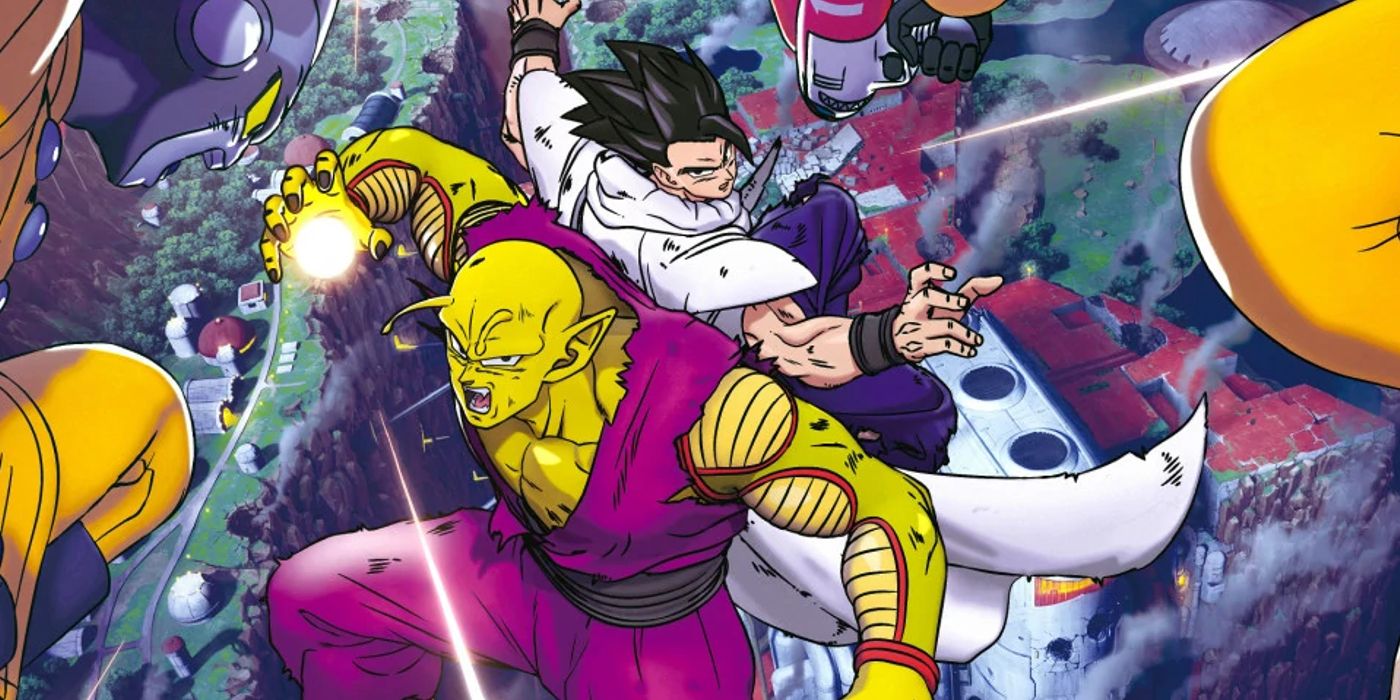Warning! SPOILERS for Dragon Ball Super: Super Hero.Here’s how every Dragon Ball movie ranks from worst to best. In addition to having anime and manga that span decades in length, Dragon Ball has also had many movies released since the early days of the franchise. Naturally, some of those movies are better than others, and this is how all the movies stack up against each other.
The Dragon Ball anime has been around since 1986, and it was in that same year that Dragon Ball began having movies made. The majority of the movies didn’t receive traditional releases, instead being shown back-to-back with other anime movies at different film festivals run by Toei Animation. Starting from the 2000s, however, every Dragon Ball movie has received a wide theatrical release that included being released internationally, which has allowed the Dragon Ball franchise to continue reaching fans all around the world over the span of almost 40 years.
Dragon Ball has had over twenty different movies made at this point, and this is every one of them ranked from worst to best. It should be noted that every entry on this list is subjective and not a definitive statement of a movie’s quality or lack thereof. Every movie's ranking simply means that some were preferred more than others, and each section below highlights why that was the case.
24. Dragonball Evolution
While most entries in the Dragon Ball franchise have their share of both supporters and detractors, Dragonball Evolution is a movie that’s more or less universally hated - and for good reason. In Dragonball Evolution, Goku, played by Justin Chatwin of Netflix's Another Life, is a teenage loser who has to hide his powers from society, but when an evil demon tries to take over the world, he has to work with a ragtag group of friends to master his powers and save the world, all while trying to get the girl of his dreams. In short, the martial arts epic that is Dragon Ball is completely tossed aside in favor of a generic superhero-type story, something that’d be off-putting to anyone who was hoping to see a movie that resembled Dragon Ball in any way.
The blatant changes to the source material are made all the worse by how 2009's Dragonball Evolution does nothing to sell itself as a good story. The script, for example, is incredibly clunky with dialogue that’s either poorly timed or just plain bad. Worse than that is how the visual effects all look ugly, especially the iconic Kamehameha, and how the fight choreography is never anything fun or interesting to watch, something that completely works against a series like Dragon Ball where the fighting is one of the biggest draws.
With all of that and the whitewashing controversy taken into account, Dragonball Evolution has virtually zero redeeming qualities to it and is a Dragon Ball movie in name only. If there’s anything about it that can be praised, it’s that it was so bad that it made Akira Toriyama get involved with the franchise again (via Comicbook), which eventually led to it being continued through Dragon Ball Super. That doesn’t change how it’s a terrible movie, though, and there’s a reason why it, along with The Last Airbender, are still regarded as textbook examples of what terrible live-action adaptations of animated shows look like.
23. Dragon Ball Z: Bio-Broly
While Dragon Ball Evolution is largely regarded as the worst Dragon Ball project in general, when it comes to the animated movies, the worst movie is usually agreed to be Dragon Ball Z: Bio-Broly, and it’s hard to argue against that. The story revolves around an old nemesis of Mr. Satan wanting to expose him as a fraud, and to get Mr. Satan where he needs to be, he blackmails him by threatening to reveal that Dragon Ball Z's Mr. Satan wet the bed once when they were kids. That alone makes it clear that the movie didn’t even try to have a serious tone, and with Goten and Kid Trunks being the leads, what follows is 50 minutes of toilet humor and other immature writing that greatly clashes with Dragon Ball Z’s tone.
The worst part about the movie, of course, is the titular Bio-Broly. The Dragon Ball Z version of Broly received diminishing returns with every movie, and that hit its peak with Bio-Broly. Every single aspect of the character people liked is tossed aside as he’s turned into an ugly slime monster, and the fight that follows doesn’t even have any noteworthy animation or choreography to speak of. Broly’s final appearance in Dragon Ball Z made him nothing more than an ugly mess, so in a way, it goes along perfectly with how much of a mess the movie was.
22. Dragon Ball: Curse of the Blood Rubies
The majority of anime movies are non-canon to the anime they’re adapted from, but the original Dragon Ball movies took that a step further by all being set in the same alternate continuity. Dragon Ball: Curse of the Blood Rubies was the first of these movies. Unfortunately, it doesn’t make a good first impression. The movie is a retelling of the Emperor Pilaf saga with Pilaf replaced by the tyrannical King Gurumes, voiced by Jeremy Inman, who also voices Dragon Ball Z's Android 16, but the problem is that the movie doesn’t do anything with it until over halfway through its runtime. Everything before that is focused solely on recapping various moments from the Emperor Pilaf saga, but all the emotional weight from the source material is completely absent. Rather than doing everything because it’s natural, everyone seems to only do things because the plot demands it, so there’s no reason to care about any of it which, in turn, makes the main plot with King Gurumes feel shallow and uninteresting.
21. Dragon Ball: Mystical Adventure
Dragon Ball: Mystical Adventure was the last of the Dragon Ball-era movies, and it’s the one that plays with the alternate continuity aspect the most. The Crane School, rivals to Dragon Ball's Master Roshi’s Turtle School, are reworked into a massive empire with Chiaotzu as their emperor. When Emperor Chiaotzu’s wife goes missing, Master Shen is put in charge of finding the Dragon Balls to wish for her return, but he’s secretly planning to use them to overthrow Chiaotzu and take over the world, a plan that naturally puts him in conflict with Goku and his friends.
With the first two World Martial Arts Tournaments and the Red Ribbon Army sagas forming the basis for its plot, Dragon Ball: Mystical Adventure has a stronger story than its predecessors, which leads to a lot of good character moments in the movie, albeit ones mostly taken straight from the source material. One of the problems with that, however, is that there’s too much going on for every story to be developed as it should. John Burgmeier's Tien’s arc is the most egregious example, as it tries to hit the same beats that his canon arc did, but never bothers to have him do any of the things that made it work. Because of that, a lot of the stories in the movie end up feeling hollow because there wasn’t enough time to properly develop them. All in all, the final entry into the Dragon Ball-era movies is ultimately a good story dragged down by bad pacing and underdeveloped characters.
20. Dragon Ball: Sleeping Princess in Devil’s Castle
Dragon Ball: Sleeping Princess in Devil’s Castle is the second of the Dragon Ball-era movies, and it’s framed in a more unique way than the other ones. While Curse of the Blood Rubies and Mystical Adventure both adapted various story arcs, Sleeping Princess in Devil’s Castle is an adaptation of one specific story: Goku and Dragon Ball's Krillin having to find a girl for Master Roshi so he’ll train them. That worked in the movie’s favor as it allowed it fewer restrictions on what it could do, which is how an originally simple story gets turned into Goku and his friends having to fight an army of movie monsters trying to take over the world.
Sleeping Princess in Devil’s Castle’s level of originality helps to put it above the other Dragon Ball movies, both of which spent far too much time retelling the source material for their own good. Not only that, but as jarring as it might be with how he’s currently characterized, seeing Krillin be a selfish jerk like he was in his introduction is used rather effectively to give him a decent arc of becoming a nicer person and Goku’s friend. Unfortunately, the story with Lucifer, voiced by Attack on Titan's Mike McFarland, isn’t much to write home about; not only is it a generic plot of monsters trying to take over the world, but the specifics of it aren’t revealed until the end of the movie. Before that, it’s just Goku and his friends fighting one monster after another and getting into various hijinks, all of which ends up getting old rather fast and makes the movie a slog to get through.
19. Dragon Ball Z: Broly — Second Coming
Dragon Ball Z: Broly — Second Coming is the second of the original Broly movies, and it has a lot of the same flaws that Bio-Broly had. Just like Bio-Broly, Goten and Kid Trunks are the leads, and as a result, a lot of the humor is toilet humor and other largely immature jokes, arguably even worse than Bio-Broly. Goten and Kid Trunks were one of the more divisive aspects of Dragon Ball's Buu saga, so if someone wasn’t a fan of them there, then they likely aren’t going to enjoy them here, especially when there are so few characters to balance them out.
The real draw of the movie, of course, is the return of Broly, but that ends up being its biggest flaw. The Dragon Ball Z version of Broly was never a deep character, but he did have some degree of depth to him and even had some good lines during his fight. Second Coming does away with all of that to make him a savage brute who does nothing but shout “Kakarot!” and that gets incredibly old when the movie devolves into one big fight against him. What makes it even worse is how this became Broly’s default characterization for over 20 years, meaning what little character he had was completely erased until Dragon Ball Super: Broly completely overhauled his character.
In terms of overall quality, Broly — Second Coming is about on par with Bio-Broly, but the only thing putting Second Coming above Bio-Broly is that its Broly fight, as tedious as it may be, is far above the fight with Bio-Broly in every way, and that also helps to put it above the largely boring Dragon Ball-era movies. There’s also a joke poking fun at how the movies would always have Piccolo appear out of nowhere to save the day, which was probably the best joke in the movie. Besides all of that, though, there’s little else worth talking about in the movie.
18. Dragon Ball Z: Dead Zone
Dragon Ball Z: Dead Zone is a movie that, while not being one of the best, is still a largely decent movie. While the story is very by the numbers for Dragon Ball, Garlic. Jr., voiced by Fist of the North Star's Akira Kamiya, stands out as one of the more interesting movie villains for his entertaining personality and what he adds to the lore of the setting, even if he’s non-canon. The fights are also generally fun to watch, especially with Dead Zone being one of the only times Kami ever gets to fight, and Gohan being the one to land the finishing blow fits in perfectly with Dragon Ball Z’s arc about Gohan’s hidden potential.
Where the movie falls apart, however, is how so many of its story beats don’t make sense. The movie opens with Garlic Jr. and his minions trying to kill Kami by killing Piccolo, but Garlic Jr. should know about their connection to the Dragon Balls, so if he wanted to use them to become immortal, then it doesn’t make sense for him to kill Dragon Ball Z's Piccolo before that. Speaking of Garlic Jr., it becomes very evident that the movie wrote itself into a corner by making him immortal when Garlic Jr., for whatever reason, uses literally the only technique that could be used to defeat him, and sure enough, that’s what does him in. Other Dragon Ball movies aren’t without their plot contrivances, but Dead Zone is just far worse about it than others.
17. Dragon Ball Z: The Tree of Might
Of the early Dragon Ball Z-era movies, Dragon Ball Z: The Tree of Might is easily one of the most fun to watch. Even if they don’t contribute much to the fight, seeing every member of the Dragon Team at the time get to do something is a nice change of pace from how the franchise usually does things, and Turles is a great antagonist for not only being a tough opponent for Goku but also for representing the kind of person Dragon Ball's Goku could have been if he had never hit his head. The biggest problem with the movie, however, is how much its themes clash with the rest of the franchise. The Tree of Might revolves around a clear and cut environmental message, even having the Dragon Balls only be used to reverse the damage of a forest fire completely unrelated to the plot. That sort of story doesn’t match up with a series that is usually focused more on the characters than the world they live in, and the clash in themes, in addition to how by the numbers it ends up being, brings The Tree of Might down a lot.
16. Dragon Ball Z: The World’s Strongest
Dragon Ball Z: The World’s Strongest is another movie held back by the weaknesses of its writing. Kochin and Wheelo, Kochin voiced by The Last of Us' Troy Baker, have very little to offer as villains by being generic mad scientists wanting to rule the world, and their henchmen, the Brutal Warriors, are similarly lacking in intrigue beyond their elemental powers. There’s also some very odd pacing in the movie as it opens with Gohan and Oolong watching Piccolo be kidnapped by Kochin, yet they both decide to do nothing about it and just wait for the plot to come to them. It especially doesn’t make sense when Gohan and Piccolo’s close friendship is taken into account, and the entire thing feels like it was done purely to pad out the runtime.
There are some good moments to be had, however. While Wheelo, whose voice actor R. Bruce Elliot had a small role in Spy X Family, doesn’t have much character to him, he still provides an entertaining fight that gets every character involved, and his design of being a giant brain in a robot body is simply cool to look at. It was also nice to see Master Roshi be involved in the fighting and not just be comic relief, something that wouldn’t happen again for another 25 years in Dragon Ball Z: Resurrection ‘F’. None of that is enough to push The World’s Strongest higher up on the list, but it’s still worth mentioning, regardless.
15. Dragon Ball Z: The Return of Cooler
Just like Broly, Cooler is a Dragon Ball Z movie villain who got to star in multiple movies, but, unfortunately, his movies also had the problem of getting worse with each one. Dragon Ball Z: The Return of Cooler has Dragon Ball Z's Cooler come back as Meta-Cooler and try to take over Namek to feed it to the Big Gete Star. It’s a clear retread of everything Frieza did in Dragon Ball Z, which is disappointing because part of Cooler’s original appeal was that he was supposed to be different from Frieza, so it makes a story people have already seen feel even worse. Goku and Vegeta’s fight with Meta-Cooler is the highlight of the film for its choreography and for forcing them to work together, but it’s undermined by the climax of the film where the two of them, despite only barely beating one out of hundreds of Meta-Coolers, are somehow able to completely overpower the Big Gete Star. Dragon Ball Z Abridged even made fun of how it doesn't make any sense, and it makes a movie that already wasn’t doing much just completely fall apart in the end.
14. Dragon Ball: The Path to Power
Dragon Ball: The Path to Power was the last animated movie before Dragon Ball Z: Battle of Gods and served as a tenth anniversary special for the Dragon Ball anime. Like the Dragon Ball-era movies, The Path to Power spends a lot of its time retelling early Dragon Ball stories, this time having the first search for the Dragon Balls combined with the Red Ribbon Army saga, but it’s more forgivable here because the movie is explicitly an anniversary special. That being said, The Path to Power, with music by Dragon Ball GT's Akihito Tokunaga, has the same problem that Curse of the Blood Rubies and Mystical Adventure had in that it doesn’t spend enough time on the stories it’s retelling to convey the same emotions and charm they had in canon, thus making it harder to care about what happens.
What gives The Path to Power an edge over the Dragon Ball-era movies, however, is how much better it looks than them. The animation and art are some of the best of the original movies, if not the best, and that all comes to a peak in the final battle with Goku having to fight a giant robot, of all things. Said battle is further enhanced by the tearful nature of Eighter’s sacrifice and the tremendous execution of Stephanie Nadolny's Goku’s Kamehameha to end the battle, which was both great to watch and beautifully scored. The Path to Power might not do the best job of retelling the source material, but it’s still enough of a visual spectacle to be fun to watch.
13. Dragon Ball Z: Lord Slug
Dragon Ball Z: Lord Slug is a Dragon Ball Z movie that surprisingly has a lot going for it. With regard to where it falls short, it’s another movie about an evil alien coming to Earth wanting to take it over, which gets repetitive after a while. Not helping matters is how Slug is a rare villain whose plans actively affect the entire planet, yet the majority of the Dragon Team is absent from the movie and never does anything to help. That’s par for the course for Dragon Ball Z movies, but The Tree of Might, which immediately preceded Lord Slug, had everyone get involved in the fight, so the absence of so many characters ends up being harder to excuse.
That being said, Lord Slug does have a lot of good moments, mostly in relation to the titular villain. Goku’s fight with him starts a little slow, but it immediately picks up steam when Goku uses his Pseudo Super Saiyan form which, while highly inconsistent with what Super Saiyan would eventually be, did allow for some truly bombastic fighting from Goku. The fight gets even better when Slug is revealed to be a Namekian and starts utilizing his Namekian abilities of stretching his limbs and turning into a giant, which makes for a far more creative and entertaining fight than the movies usually have to offer. Slug’s true nature also allows for Christopher Sabat's Piccolo to get more focus than he usually does, with him even being the one to give everyone the key to defeating him. Lord Slug isn’t a particularly great movie, but it’s one where the good definitely outweighs the bad.
12. Dragon Ball Z: Resurrection ‘F’
Dragon Ball Z: Resurrection ‘F’ is a movie that tries to be a big event, but ends up failing at the execution. The big draw of the movie is that Frieza has not only been brought back to life, but he’s obtained a new form to surpass Goku, and that’s largely handled well. Golden Frieza has a great transformation scene and leads into a good fight with Goku’s Super Saiyan Blue, and Frieza’s resurrection is brilliantly scored by the heavy metal sounds of Maximum the Hormone’s “F,” which was even the inspiration for the title (via Anime News Network).
Everything else about the movie, however, ends up falling short. The time before Goku and Frieza’s fight is spent on the Dragon Team fighting the Frieza Force, and while there are some good moments in the fight, it quickly starts to get boring since all everyone’s doing is fighting nameless goons for far too long. Even the big fight between Goku and Frieza ends up not being as good as it could be, because Goku spends the entire fight not treating him as a serious threat. The movie does a good job of explaining why that is, but it’s still odd that a movie billed as Frieza’s big return to the franchise would go out of its way to treat him as little more than a joke. Even worse is how it has one of the most egregious examples of Dragon Ball's Vegeta not being able to win a fight when Goku, thanks to Whis’ time manipulation, ends up being the one to kill Frieza when the climax of the film had made it seem like Vegeta was finally going to get his revenge on him. Like Battle of Gods, Resurrection ‘F’ has a lot of good moments that serve to push the franchise forward, but it forgets to have a good story to go along with that, and that only serves to bring it down.
11. Dragon Ball Z: Bojack Unbound
Of all the movies on this list, Dragon Ball Z: Bojack Unbound is one of the better ones at doing a lot with very little. The movie is another story about generic evil aliens wanting to take over the world, and the lack of notable characterization for Bojack, voiced by Tessho Genda, who does the dub work for Batman in Batman: The Animated Series, does detract from the movie. Where it shines, however, is by using that basic plot to build on various character arcs from the Cell saga. Vegeta, for example, reawakens his drive after giving up fighting, and him doing so because Trunks was in danger greatly shows how much he’s grown to care for his loved ones. Goku also gets to show off how much he cares about Gohan once again when he defies the rules of the afterlife to save him from Bojack and push Gohan to keep fighting, something that can easily be seen as one of the best scenes in the entire franchise.
Speaking of Gohan, Bojack Unbound is the first movie to put Dragon Ball Z's Gohan in the lead, and it does a great job with it. While it doesn’t focus too much on his character, the climax makes it clear that this is a story of Gohan truly coming into his own as Earth’s protector, and him effortlessly defeating Bojack when he turns Super Saiyan 2 is a perfect showing of that. Bojack Unbound has its shortcomings, but as a sort of epilogue to the Cell saga, it more than gets the job done.
10. Dragon Ball Z: Broly — The Legendary Super Saiyan
Dragon Ball Z: Broly — The Legendary Super Saiyan was Broly’s debut in the franchise, and it’s far and beyond the best of the original Broly trilogy. Broly, voiced by Vic Mignogna of Fullmetal Alchemist Brotherhood fame, was a very different character in his debut compared to later appearances. While Broly in Broly — Second Coming and Bio-Broly was little more than a savage brute, Broly in his debut had a bit of trauma from his past to flesh out his character that didn’t specifically revolve around Goku making him cry as a baby, and he even has a few good lines that showed a degree of wit and sadism that’s absent from later appearances. None of it is fleshed out enough to make Broly a deep character, but it does make him far more interesting here than in his future Dragon Ball Z appearances.
Going right along with that is the fight with Broly himself. Just like Broly — Second Coming, the movie is largely dedicated to a big fight between all of the heroes and Dragon Ball Z's Broly, but it works better here because Broly has just enough character to make things fun to watch. However, that, too, ends up wearing out its welcome, and it does start to become tedious to watch this hulking brute steamroll everyone, even if said steamrolling has lots of brutal moments to it. Bringing it down even further is the anticlimactic nature of the conclusion where Goku somehow combines everyone’s energy into a punch strong enough to kill Broly, even though everyone barely had any fight in them left and Broly had spent the past 20 minutes completely overpowering them. All in all, Broly — The Legendary Super Saiyan, written by Dragon Ball Z Kai's Takao Koyama, has a lot of the same problems as the rest of the Broly trilogy, but it manages to stand above them for at least attempting to make Broly a character.
9. Dragon Ball Z: Super Android 13!
Dragon Ball Z: Super Android 13! is another movie that serves as a retread of a canon storyline, in this case, the Android saga, but what makes it stand above some of the other movies is the script. For whatever reason, the script for the English dub was reworked to not only add a lot more jokes that mostly stick the landing, but the main villains were given more dialogue that gave them far more character than they had in the original Japanese. This is especially true of Android 13, voiced by Android 17's Chuck Huber, who is given clear motives for his actions beyond just wanting to kill Goku. Because of that, even though Super Android 13! doesn’t have much to offer in the way of story, it’s at least more entertaining than some of the other entries on this list. A lot of that gets lost when the titular Super Android 13 appears, as he’s just another savage brute with little dialogue or character to speak of, even in the English dub, but it did lead to a great scene of everyone throwing themselves at Super Android 13 so Goku would have time to charge the Spirit Bomb technique, which he then absorbed into his fist to destroy Super Android 13 with a punch. It’s an all-around great climax, and it’s one that more than makes up for a lackluster villain.
8. Dragon Ball Z: Cooler’s Revenge
While Dragon Ball Z: The Return of Cooler wasn’t anything special, Dragon Ball Z: Cooler’s Revenge did a fantastic job with Cooler. Cooler makes his debut by immediately setting himself apart from Frieza as someone far more serious and goal-oriented, and that helps to establish that he’s not going to just be a carbon copy of the character. Going even further with that is Cooler’s fifth form, which not only gave him a look completely divorced from Dragon Ball Z's Frieza but allowed for him to completely overpower Goku in their fight and pull off some truly wild moves, such as flying straight through Goku’s Kamehameha to land a punch on him.
A lot is done to establish Cooler as both a unique and entertaining character, but other members of the cast also get good material. Piccolo’s fight with Cooler’s Armored Squadron has him using some impressive strategy and choreography, including a rare instance of him stretching his limbs, and the absolute fear Goku experiences just from mistaking Cooler for Frieza is fun to watch for how different it is from his usual self, especially when he finally overcomes it to fight Cooler. The actual fight gets a little cheesy near the end, especially when a dying bird, of all things, motivates Sean Schemmel's Goku to keep fighting, but it’s a great fight, regardless. The movie, as a whole, does a great job of making Cooler a character with his own specific appeal.
7. Dragon Ball Z: Bardock — The Father of Goku
Before Dragon Ball Super gave its own version of the events, Dragon Ball Z: Bardock — The Father of Goku was the official story of Goku’s father, Bardock, and the destruction of the Saiyan race. Unlike Goku, Bardock was a traditional Saiyan warrior who would slaughter innocents without remorse until he learned of Frieza’s plans to betray his people and kill them all. Depending on which dub you’re watching, Bardock will either be a tragic hero for trying to stop Frieza and make amends for his past or the lesser of two evils for only caring about vengeance, and while the former does detract from the experience a bit, Dragon Ball Z's Bardock is still fun to watch, either way, and the way he fights so hard just to get a glimpse at Frieza is as thrilling to watch as it is sad. The tragedy of Bardock’s story does bring things down a little, however, as it adds a degree of pointlessness to it all, and the psychic powers he received don’t add enough to the story to justify the attention they receive. Still, Bardock’s story did a great job of making him someone to root for, even when the outcome of his story is plain as day.
6. Dragon Ball Z: The History of Trunks
In a similar vein as Bardock: The Father of Goku, Dragon Ball Z: The History of Trunks is a story of nothing but tragedy. The movie opens with the Dragon Team of Future Trunks’ timeline being completely slaughtered by the Androids, and the rest of the movie is just the Androids winning one fight after another, even killing Gohan in the process. All of it needed to happen to bring Trunks to where he was in his debut. Even so, watching him and everyone else suffer so much can be hard to watch.
That being said, it all works far better here than it did in Bardock: The Father of Goku. Unlike that movie, The History of Trunks has a much bigger part in the main story, so it being used as mostly setup works far better. Also helping matters is how far it goes to sell the audience on the tragedy of everything, with Trunks’ first Super Saiyan transformation being the perfect example for its rainy setting and heartwrenching score. Dragon Ball Z's Future Trunks’ backstory was never going to be a happy story, and while it can be hard to watch, that ends up helping to make it great to watch.
5. Dragon Ball Z: Fusion Reborn
Dragon Ball Z: Fusion Reborn is a true standout among the Dragon Ball Z movies. The Dragon Ball and Dragon Ball Z movies usually only had art and animation on par with the show at best, but with Fusion Reborn, all of the visuals and animation look far better than what would usually be seen in the anime. A lot of that comes from the uniquely surrealist landscape of Hell, but the characters are also made out to look great, with Goku’s Super Saiyan 3 probably looking the best that it would ever look before Dragon Ball Super.
Where all of that truly shines, however, is through Janemba. Like many movie villains, Janemba has little in the way of personality, but he more than makes up for it with a unique fighting style that’s greatly enhanced by him looking so good and being animated so well. This is especially true when he turns into Super Janemba, as his swordplay, portal powers, and teleporting by way of turning into cubes results in a fight unlike anything that’s been seen before.
The movie also manages to squeeze in some nice character bits with Vegeta. While his anguish about Goku holding back against him was more or less taken wholesale from the Buu saga, it still works to give Goku and Vegeta something in the way of character development, and not only does it lead to a bittersweet conclusion where they’re able to separate as friends, it also serves to set up the debut of Gogeta. Goku and Vegeta fusing was the big draw of Fusion Reborn, and the movie more than lives up to the hype by having the art and animation reach their peak as Gogeta thoroughly overpowers Super Janemba. The scene left so much of an impression that both Gogeta and his signature Stardust Breaker attack would become canon in Dragon Ball Super: Broly became the Metamoran fusion Gogeta, and they both looked even better there. If anything is working against the movie, it’s that the main story of the boundary between Hell and the realm of the living being broken doesn’t really go anywhere and mostly exists to pad out the runtime, but it doesn’t change the fact that Fusion Reborn is just a pure blast, from start to finish.
4. Dragon Ball Z: Battle of Gods
Dragon Ball Z: Battle of Gods’ main purpose was to set up the new status quo of the franchise going forward, and it definitely succeeds at doing so. Beerus and Whis’ existence, in addition to establishing the multiverse, works great to organically establish that Goku still has plenty of challenges ahead of him, and Dragon Ball Super has gotten more than enough mileage out of that fact. The build-up to Super Saiyan God also has great payoff; while the transformation doesn’t look all that impressive here, especially compared to how it looks in the Tournament of Power and Dragon Ball Super: Broly, Goku’s massive—and beautifully animated—fight with Beerus more than justifies its existence.
There are a few things that bring the movie down, however. Battle of Gods is far more comedic than a lot of the older movies. The movie often feels like it’s focused too much on comedy and not enough on the actual stakes of the story. Beerus also detracts from the story, as the shtick of everyone having to be nice to Dragon Ball's Beerus so he doesn’t go on a rampage and destroy everything can get rather tedious, especially since it wouldn’t be until late into Dragon Ball Super that he would start to become a nicer person. Not helping matters is how the movie very casually retcons Planet Vegeta’s destruction to be something Beerus told Frieza to do instead of something Frieza did on his own; not only does it take a lot away from Vegeta’s story, but Vegeta doesn’t even learn about it until the Granolah the Survivor arc of the manga, which was almost 10 years after the fact.
Beerus’ character and the overall tone do bring Battle of Gods down a bit, but not enough to keep it from being a great movie. The animation and fight scenes more than make up for its shortcomings, and the actual story perfectly set up what 2015's Dragon Ball Super would be like. Even if the movie wasn’t perfect, it’s still safe to say that it did exactly what it set out to do, and then some.
3. Dragon Ball Z: Wrath of the Dragon
Dragon Ball Z: Wrath of the Dragon was the last of the Dragon Ball Z-era movies, and that era definitely went out with a bang. Unlike most Dragon Ball movies, Wrath of the Dragon tried its hand at focusing on story over action, resulting in a wholly unique experience for the franchise. Tapion’s story plays out like something out of a fantasy story, but it doesn’t clash enough with Dragon Ball’s style to be a detriment to the movie, especially when the movie takes the time to give him so much development in its runtime. Dragon Ball Z's Kid Trunks is also a surprising highlight of the movie, with his sibling-like bond with Tapion making him far more endearing than he usually is and giving him the best character writing that he’s ever had in the franchise.
The movie isn’t without its issues. The plot is kicked off by Hoi tricking everyone into using the Dragon Balls to free Tapion, which also frees Hirudegarn, but the problem is that Hoi is so obviously suspicious that everyone looks like an idiot for just going along with his story without question. There’s also the final fight with Hirudegarn which, while fun to watch, is brought down by Goku being the one to land the final blow, since he had very little to do with the conflict compared to Tapion, who shares a voice actor with My Hero Academia's Dabi, and Kid Trunks. That being said, the fight being the debut of Goku’s iconic Dragon Fist technique does balance things out a little. Overall, the movie is still by and large one of the franchise’s better entries for how different it made itself out to be.
2. Dragon Ball Super: Broly
The biggest achievement of Dragon Ball Super: Broly was, without a doubt, making Broly into a decent character. Even before the Dragon Ball Z version degraded into a savage brute who could only shout “Kakarot!”, Broly was hardly a deep character, the most being done with him being his pure sadism. Dragon Ball Super: Broly changed all of that by not only reworking the rage aspect of Broly’s character into a clearer problem but by completely overhauling him to be a more sympathetic and tragic character. Thanks to that, there ends up being far more to Dragon Ball Super's Broly’s character than just the fights he gets into, which puts him far above the original version.
Beyond Broly’s new character, everything else in the movie is just as stellar. The art and animation were both completely reworked from the previous movies to give Broly a new style, and the results are spectacular. Not only is the movie gorgeous to look at, but every fight has top-tier animation far above anything the franchise has ever done, especially in the fights involving Goku and Gogeta. This sort of style would eventually make its way into other Toei Animation productions such as One Piece's Wano arc and Dragon Quest: The Adventure of Dai, and that just goes to show how effective it all was.
Dragon Ball Super: Broly is another movie where the story is mostly an excuse for a lot of fighting, but this is one time when that does little to nothing to hurt the movie. With the art and animation being as gorgeous as they are, the movie didn’t need a great story to go along with it, as the fights do more than enough to carry the movie. Even with that, however, it gets plenty of good story material out of Broly’s character, especially compared to the original version, and it all comes together to make a fantastic spectacle of a film.
1. Dragon Ball Super: Super Hero
Of all the Dragon Ball movies, the best one is by and large the recently released Dragon Ball Super: Super Hero. While the change to CG animation might be off-putting to people, especially when Dragon Ball Super: Broly looked so great in traditional animation, it ends up not being a problem in the slightest. Not only is the art and animation incredibly smooth, but it’s used very effectively to provide lots of unique shots and visuals that probably would have been too complicated for pure 2D animation. It all comes together to give what’s probably the best use of CG animation that’s ever been seen in anime.
The rest of the movie fares equally well. While other Dragon Ball movies have either sacrificed plot for action or action for plot, Super Hero is probably the best attempt at balancing out both. There are plenty of fight scenes throughout the movie, of course, but it’s far more focused on its superhero narrative and the conflict with the Red Ribbon Army than it is fighting. That results in a fresh change of pace from how the movies are usually presented, especially when the movie is so earnest about its superhero themes.
That increased focus on plot also works well for the character writing present throughout the movie. Piccolo ends up being the true protagonist of the movie, and a lot is done to establish how much he cares about Gohan and his family and what he’s willing to do to protect them. In that regard, Super Hero serves as the perfect conclusion to Piccolo’s character arc, with the man who once tried to take over the world as Demon King Piccolo now giving his all to protect it. The villains of the movie also get some good writing as genuinely good people being tricked into being evil, and that gets fleshed out enough to make them far more developed than any other movie villain in the franchise.
The fighting, of course, is also great. Every fight takes full advantage of the new art style to have things flow with a level of speed and fluidity that ends up being on par with Broly. Gohan’s fight with Gamma #1 uses a lot of creative shots and animation, and Piccolo’s fight with Gamma #2 is incredibly creative with its use of the environment, especially when he uses his new Orange Piccolo transformation. Even the final fight with Cell Max is great, as while it’s a little out of place with the rest of the movie, the animation is still incredible and there’s great choreography from everyone involved. Topping things off is the reveal of Son Gohan Beast which, in addition to being a callback to Teen Gohan’s Super Saiyan 2 transformation, serves as a great payoff of Piccolo’s efforts to toughen Gohan up, and Gohan using the Special Beam Cannon is a perfect encapsulation of the relationship they’ve built over the years.
Above all else, what makes Dragon Ball Super: Super Hero work so well is how much heart it has. Right from the start, the movie was billed as being lighthearted, and it more than succeeds at doing that. 2022's Dragon Ball Super: Super Hero being framed as a classic superhero story is one thing, but what really does it is the focus on the familial relationships among the cast, something that often gets overlooked in favor of action. The bonds that everyone in Dragon Ball built with each other has always been one of the core aspects of the series, and Dragon Ball Super: Super Hero reminding the audience about that is truly a sight to behold.

